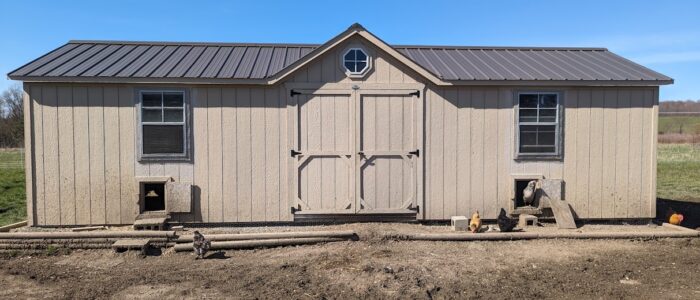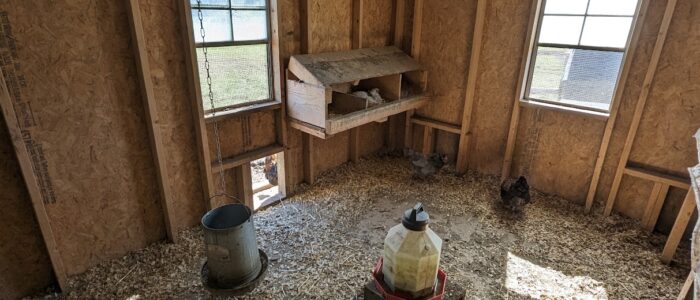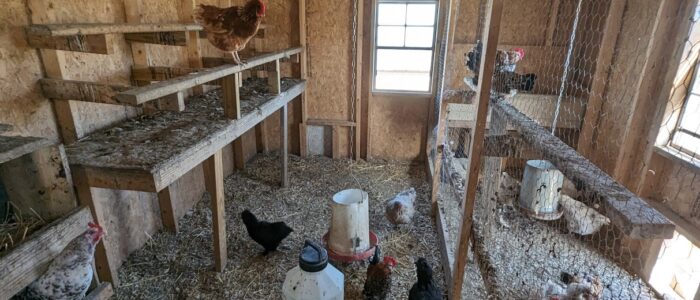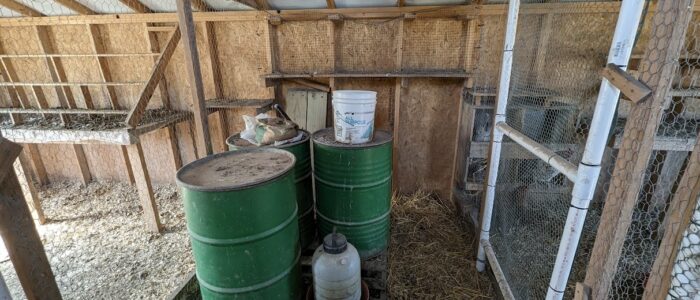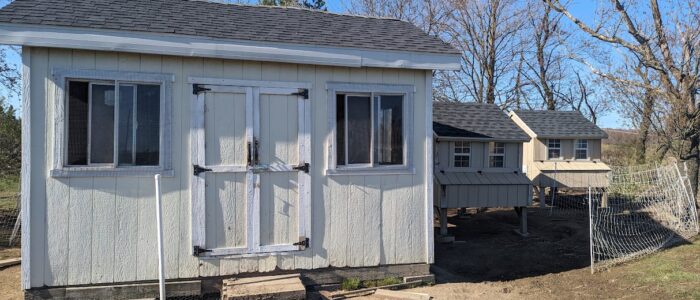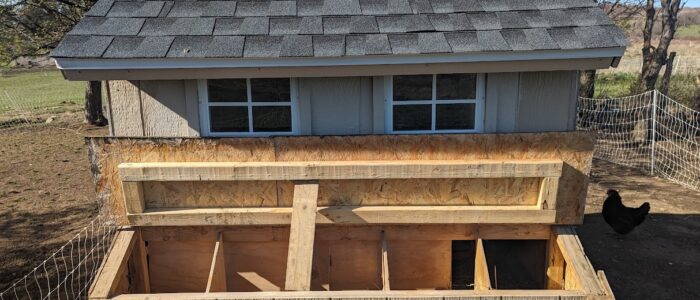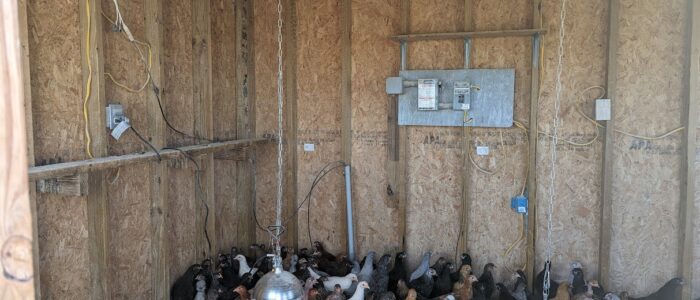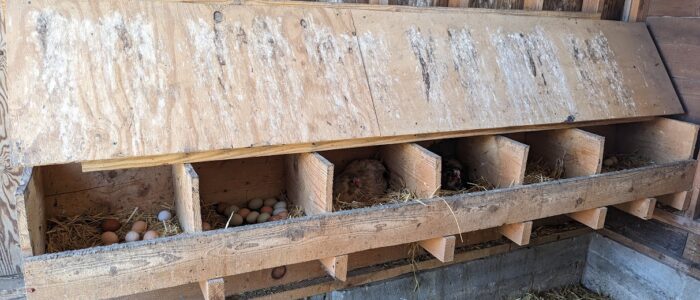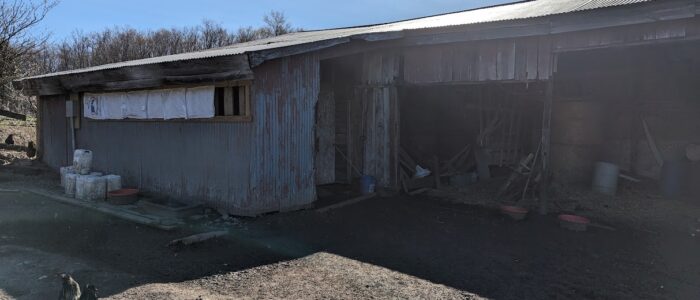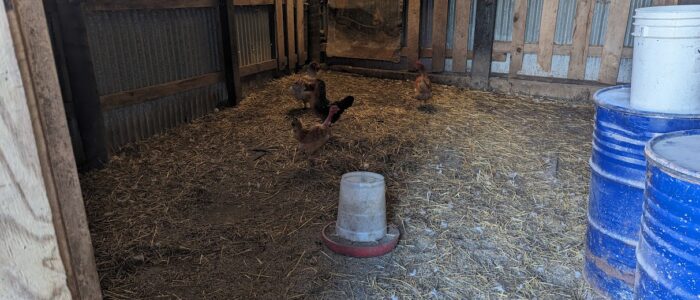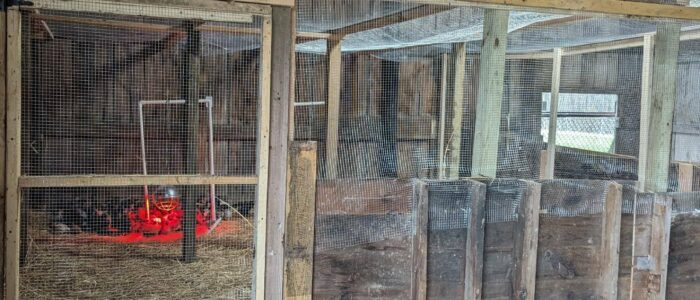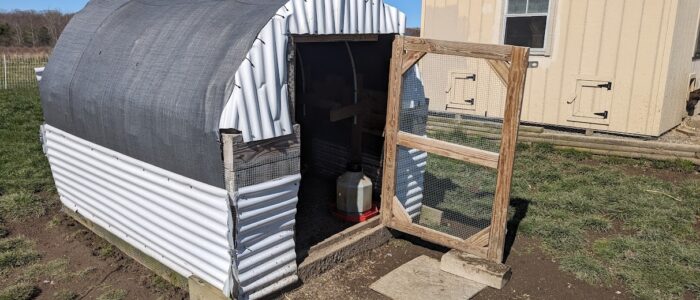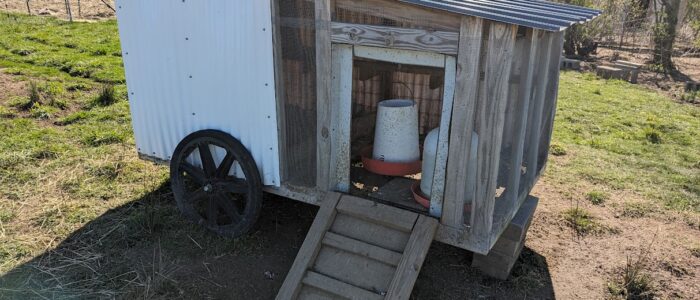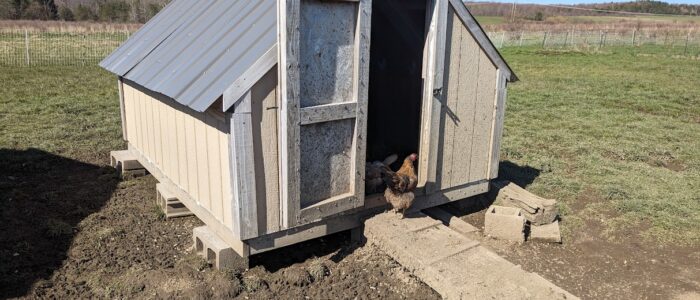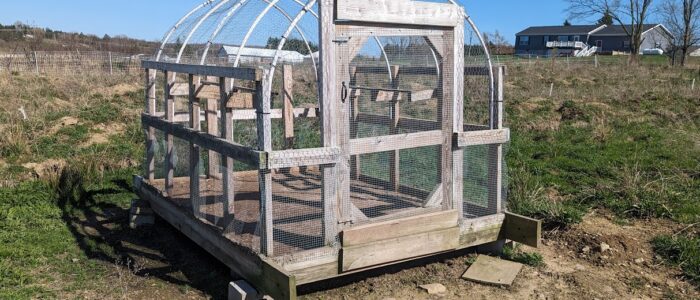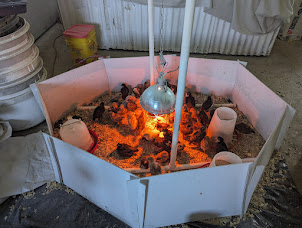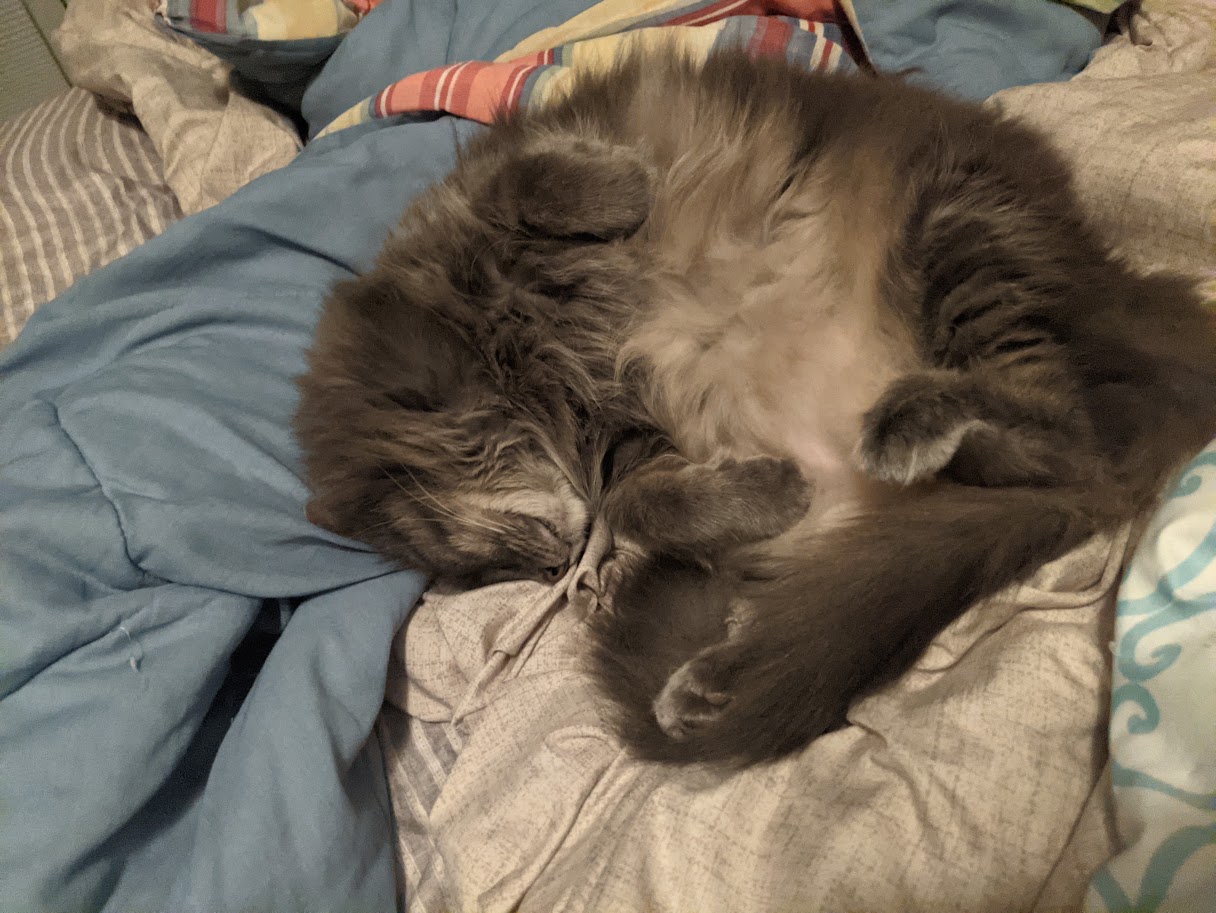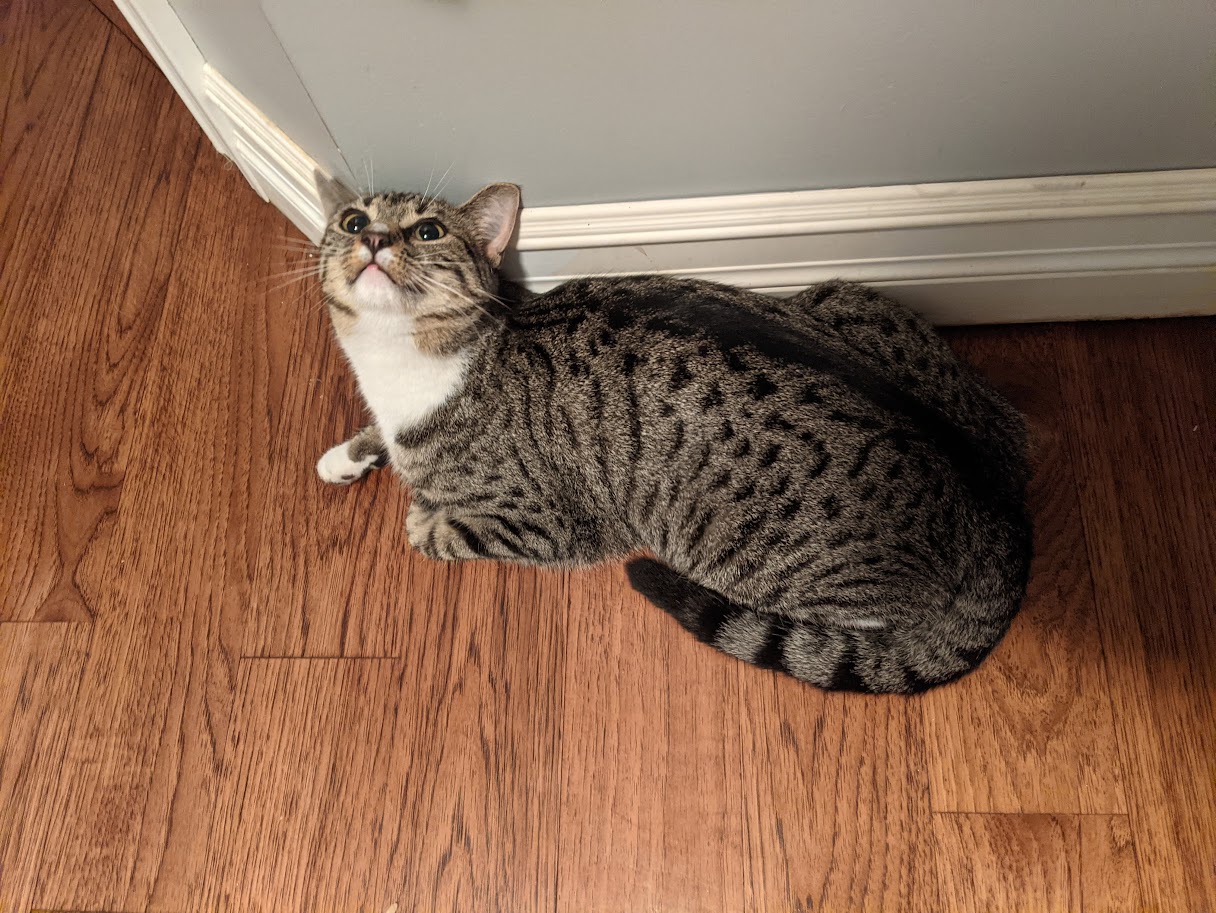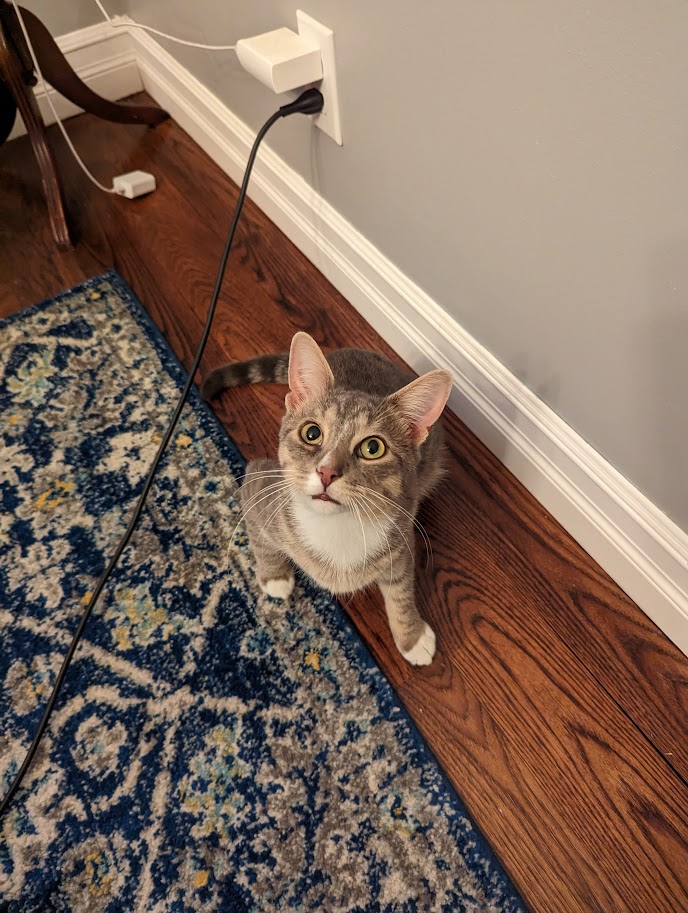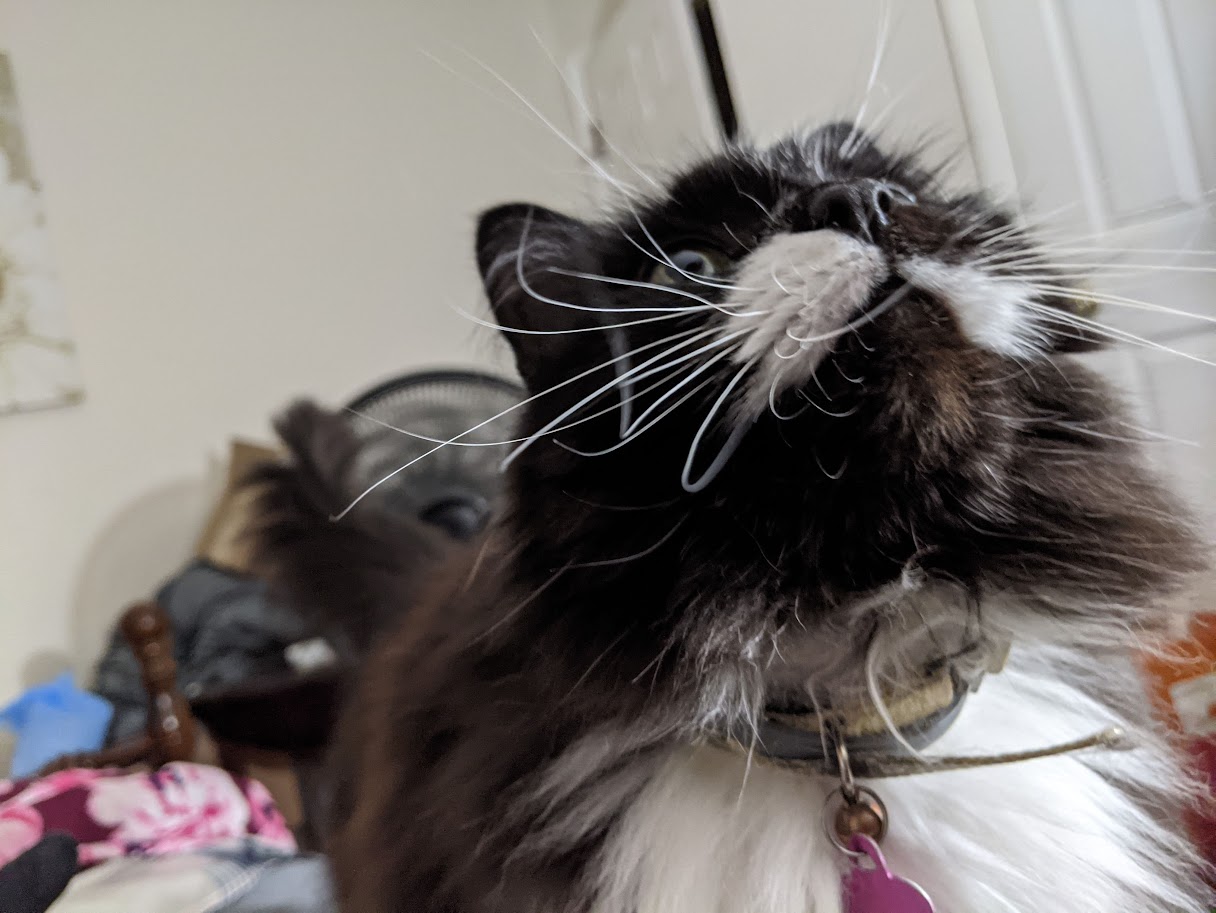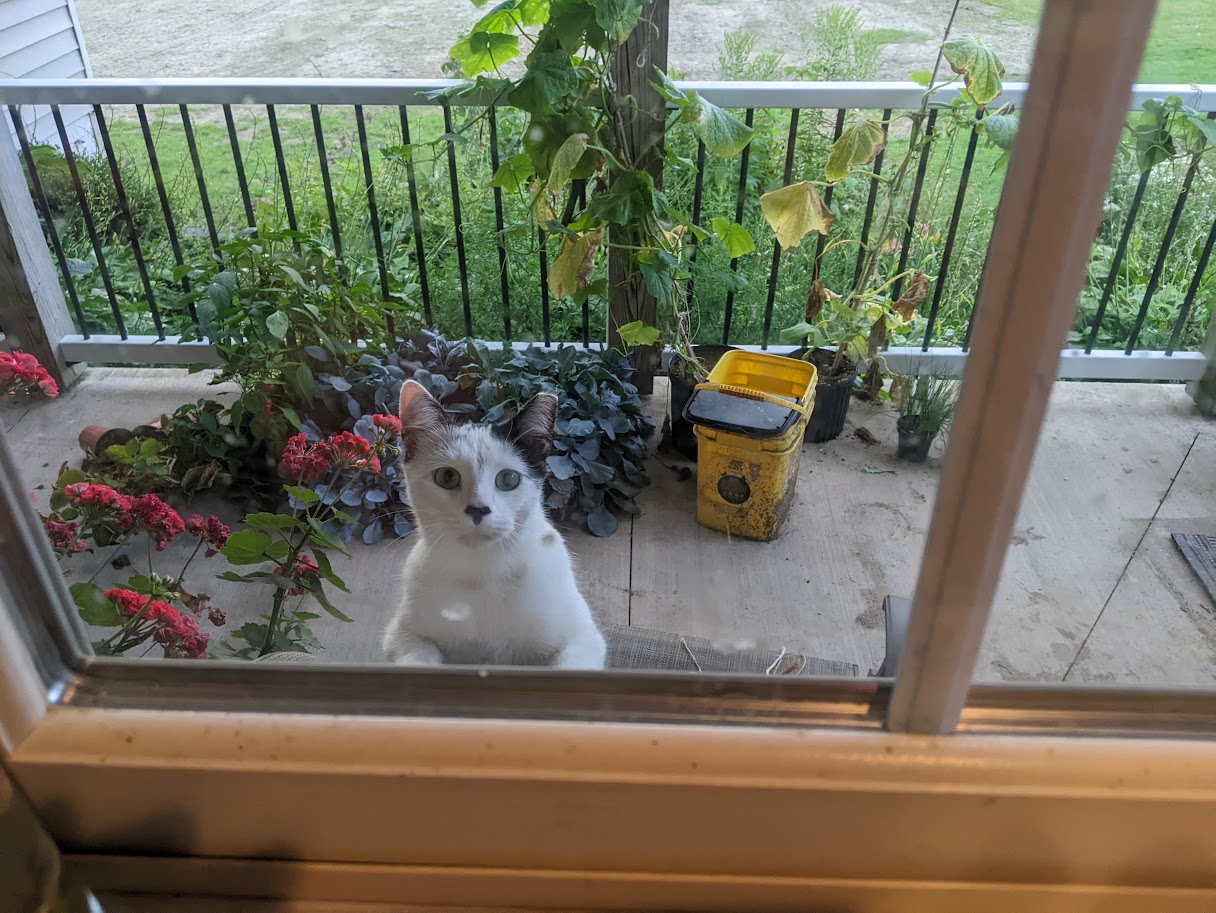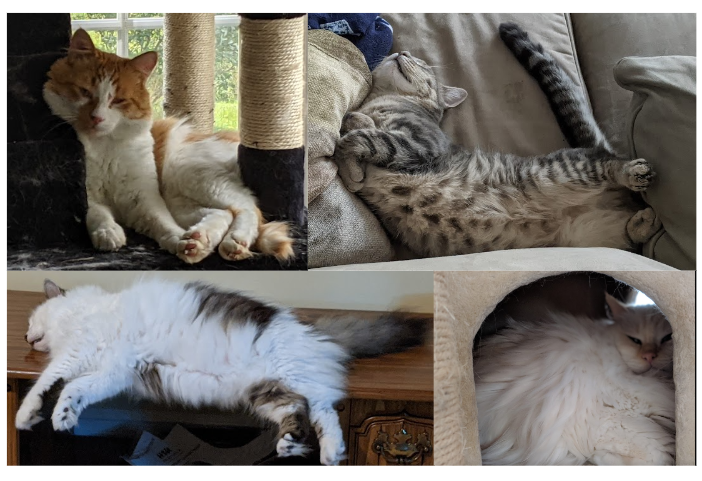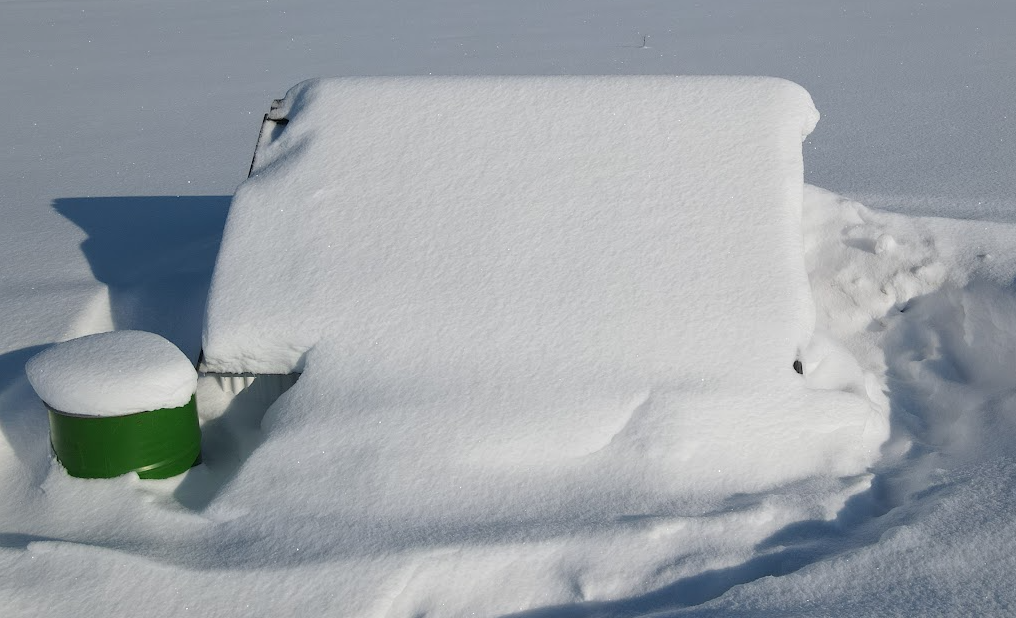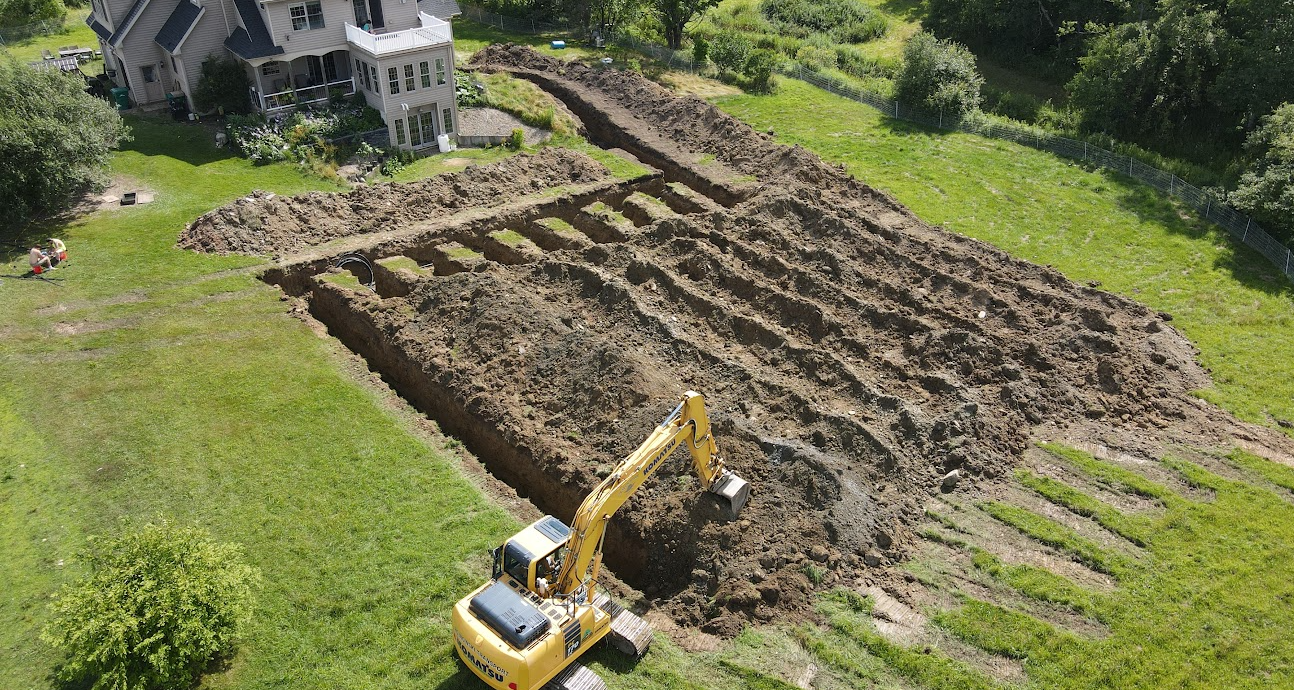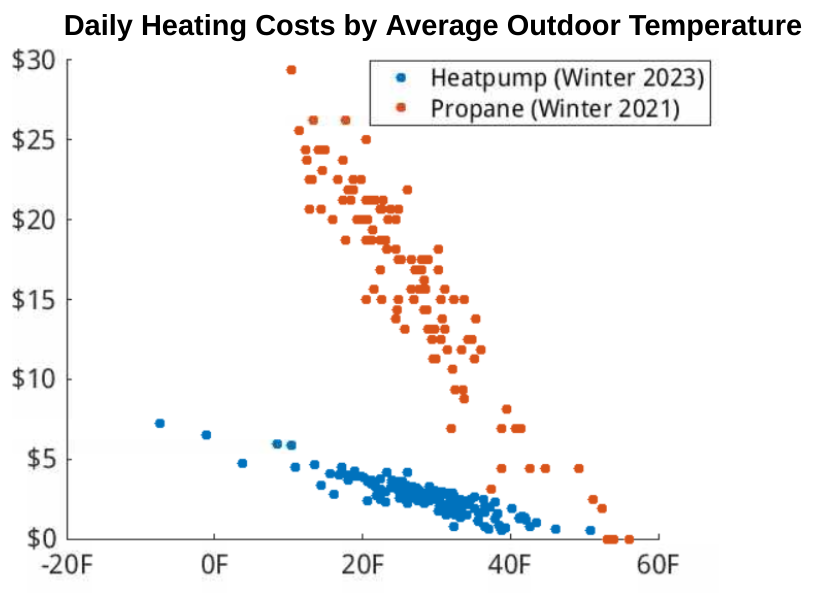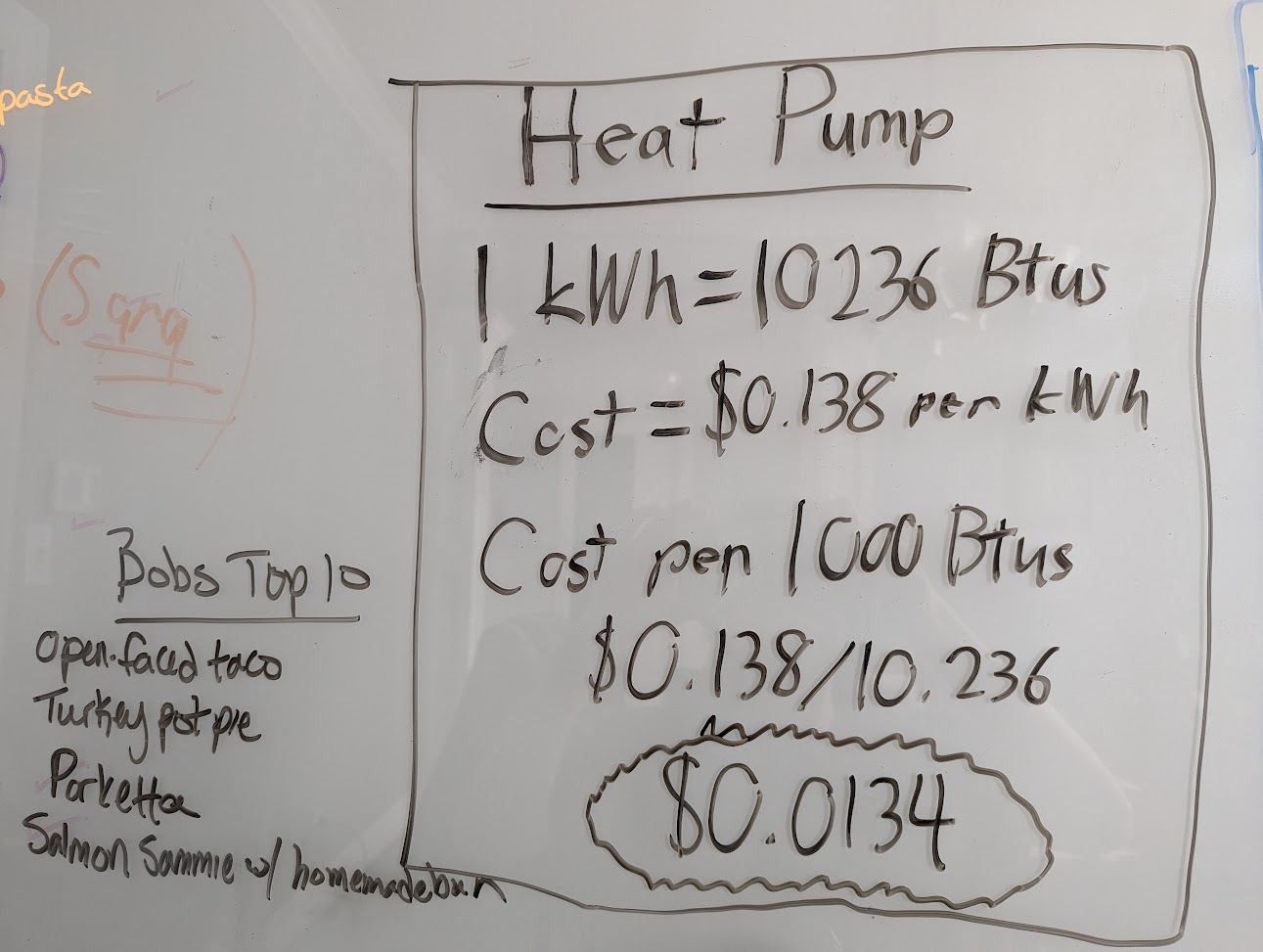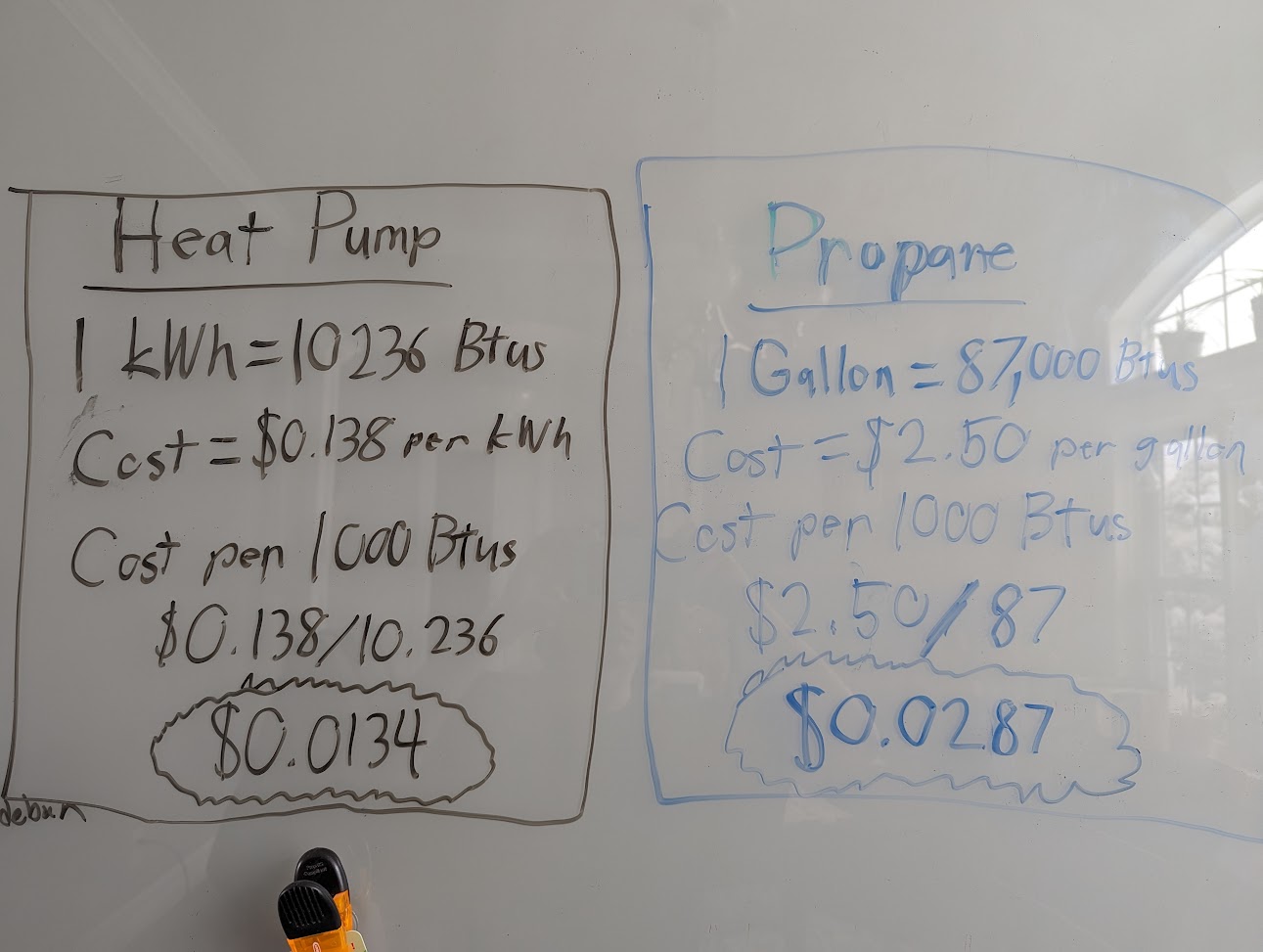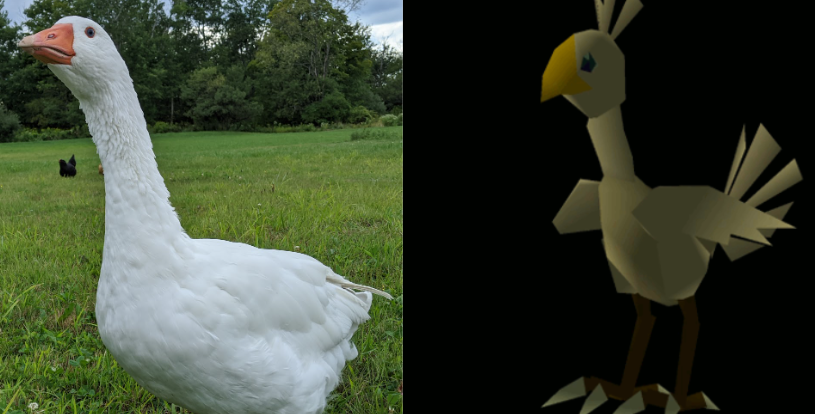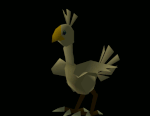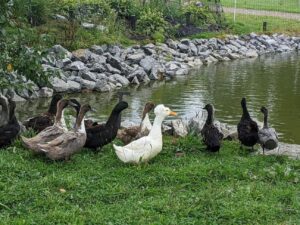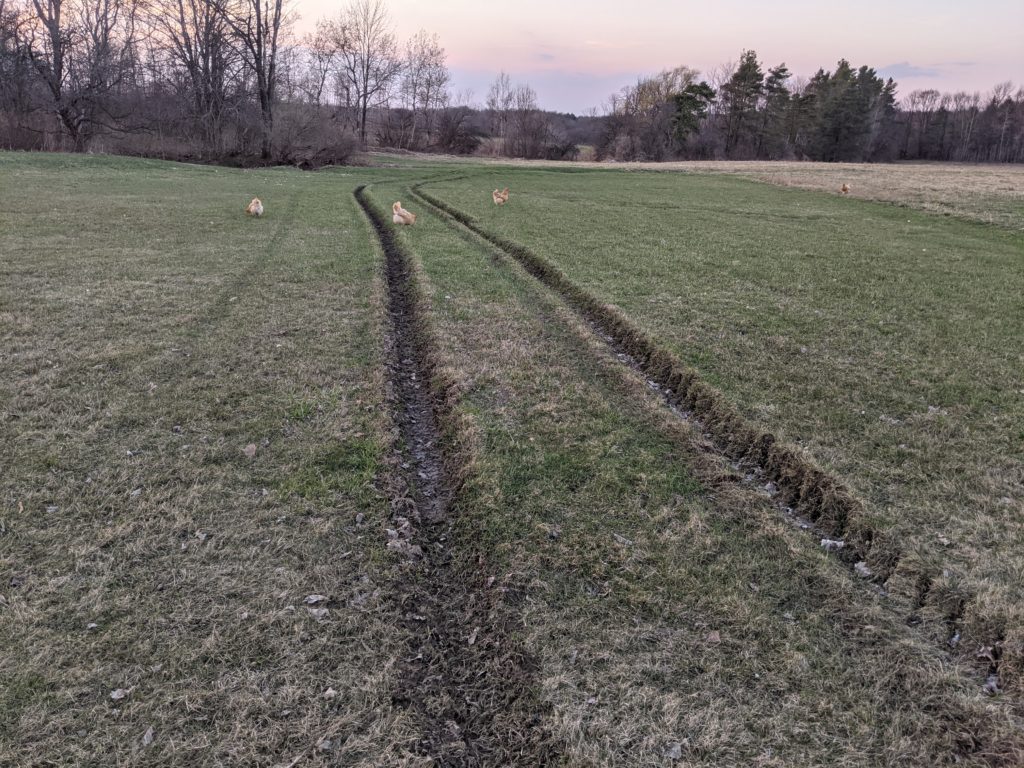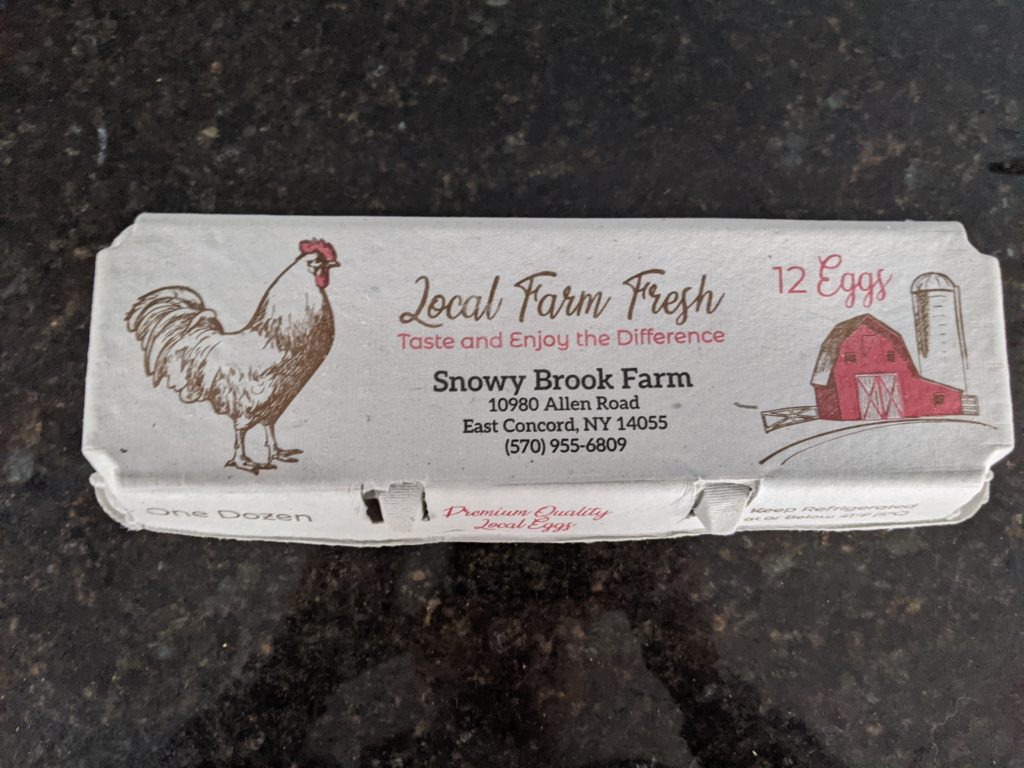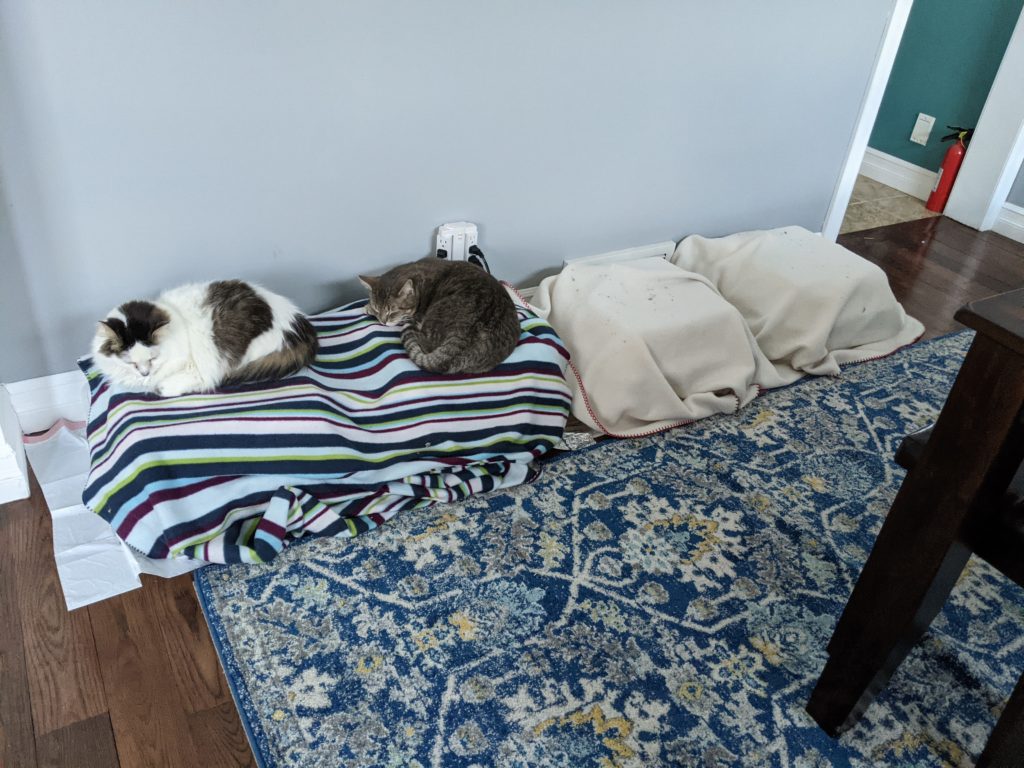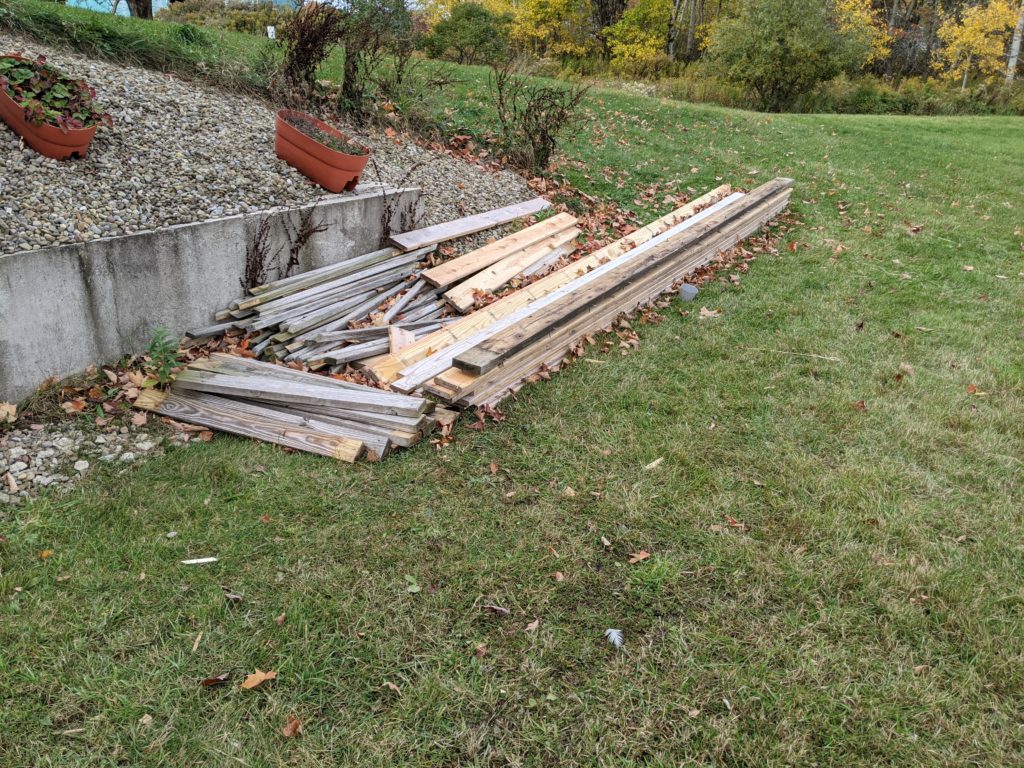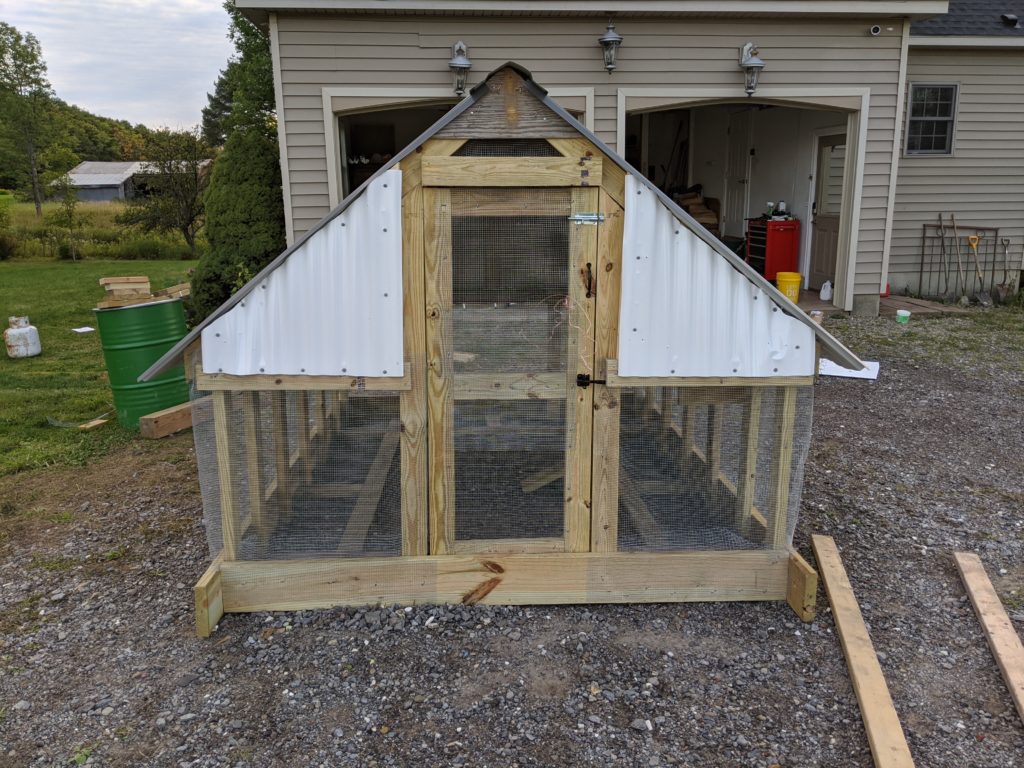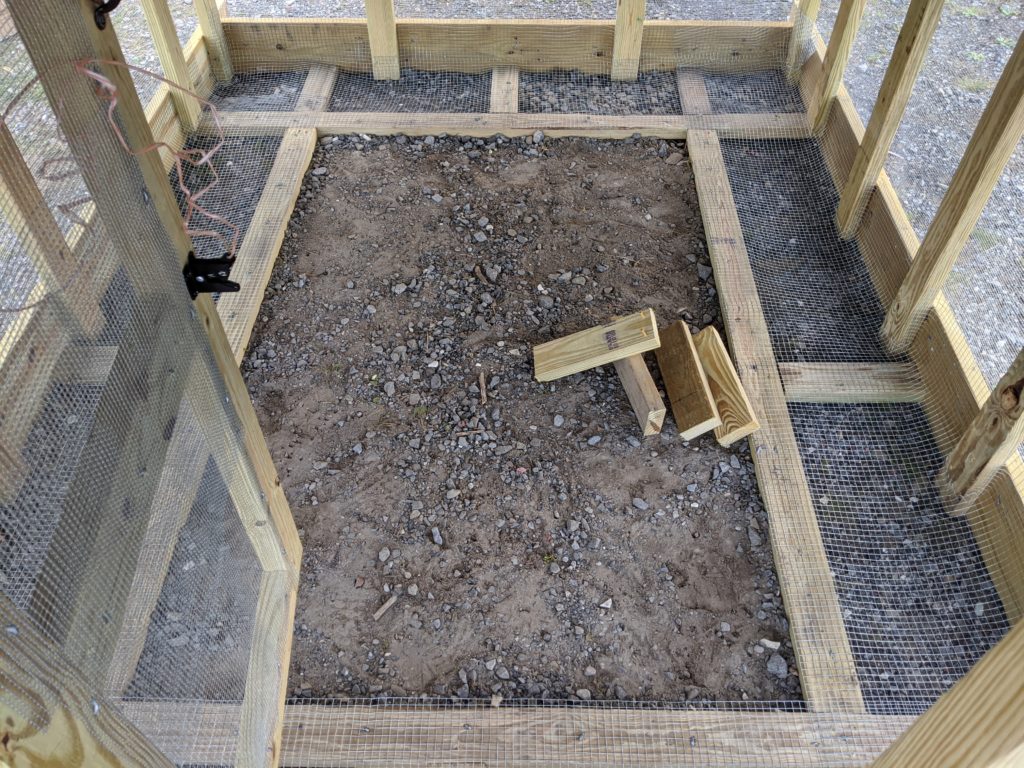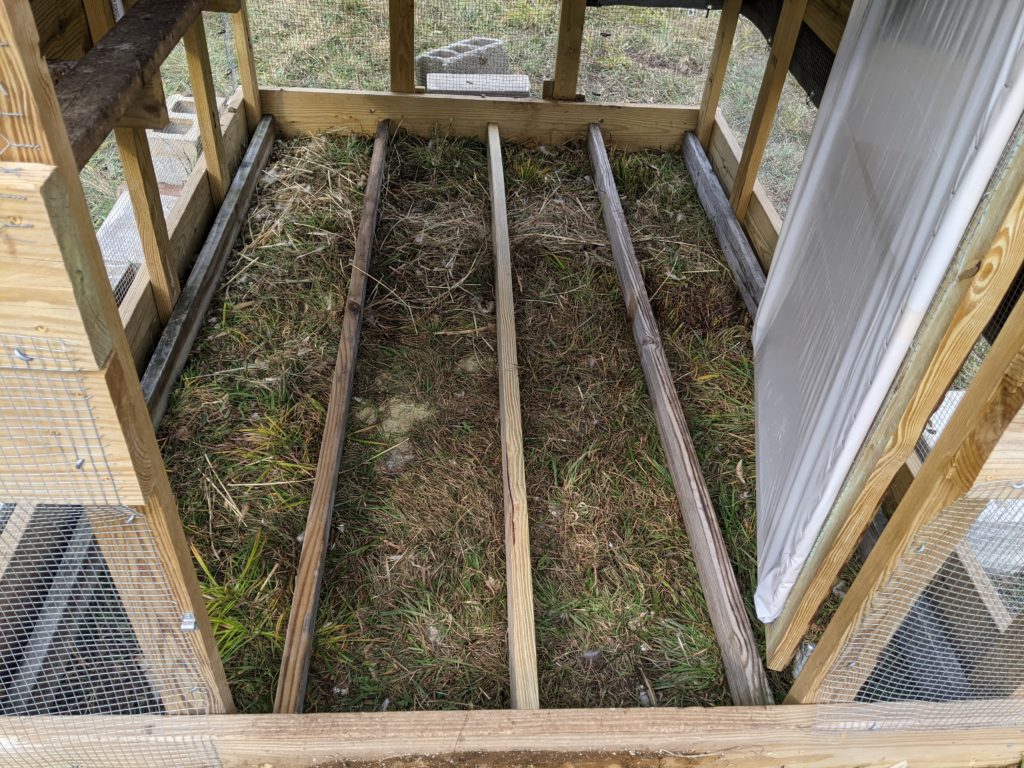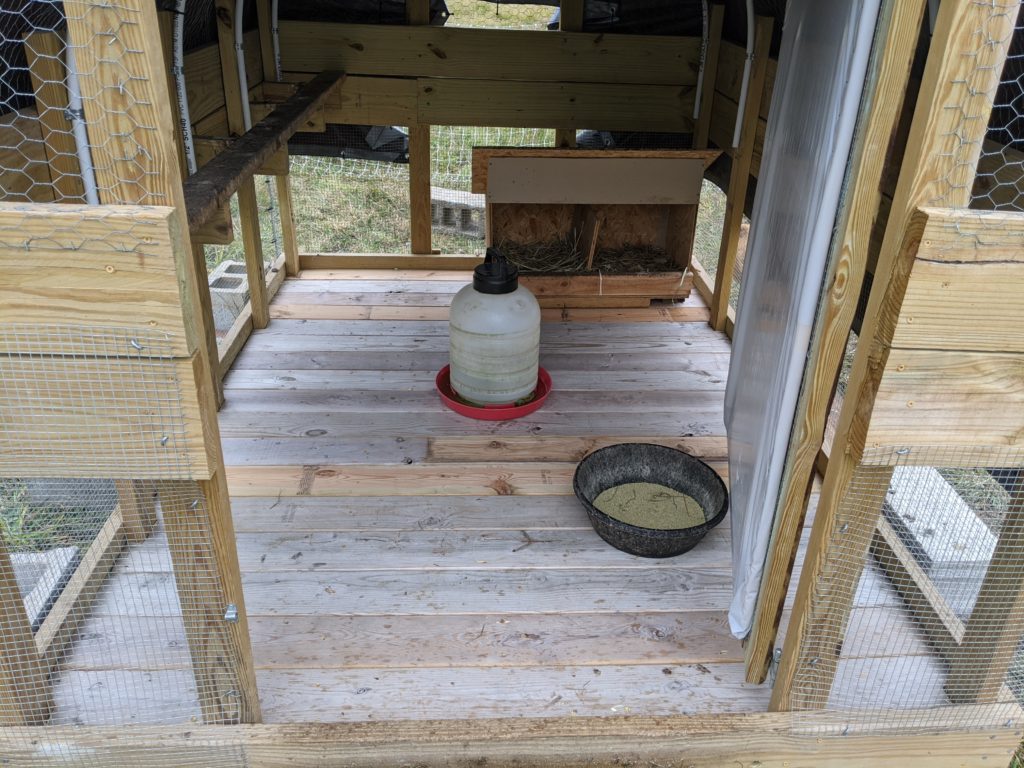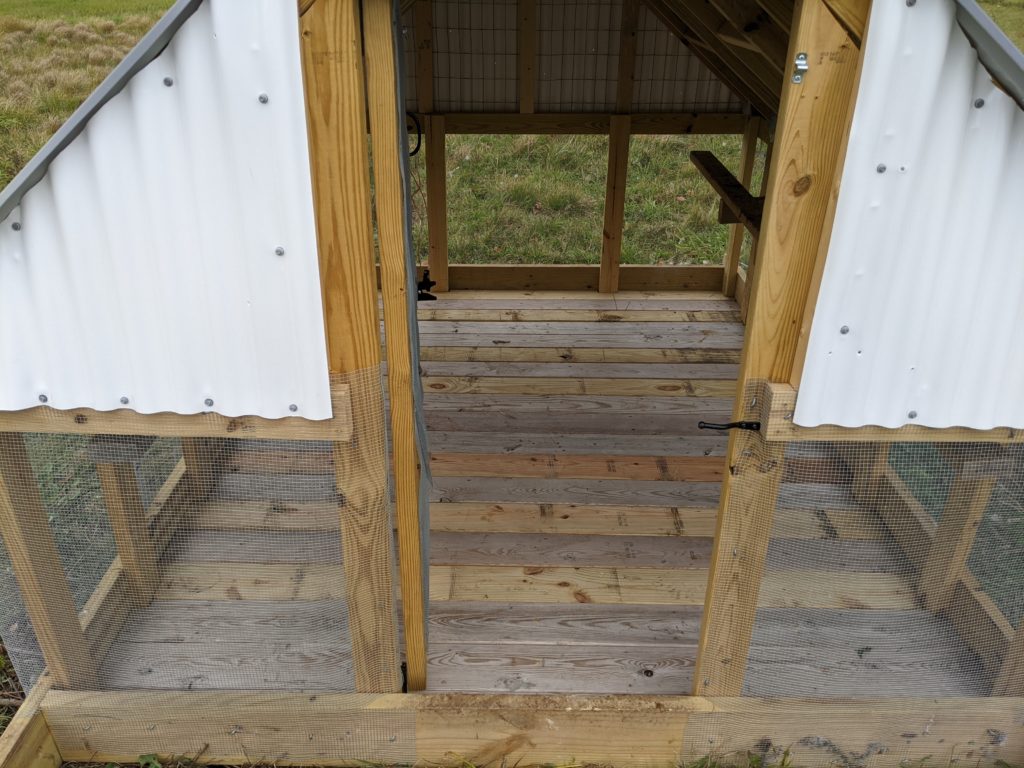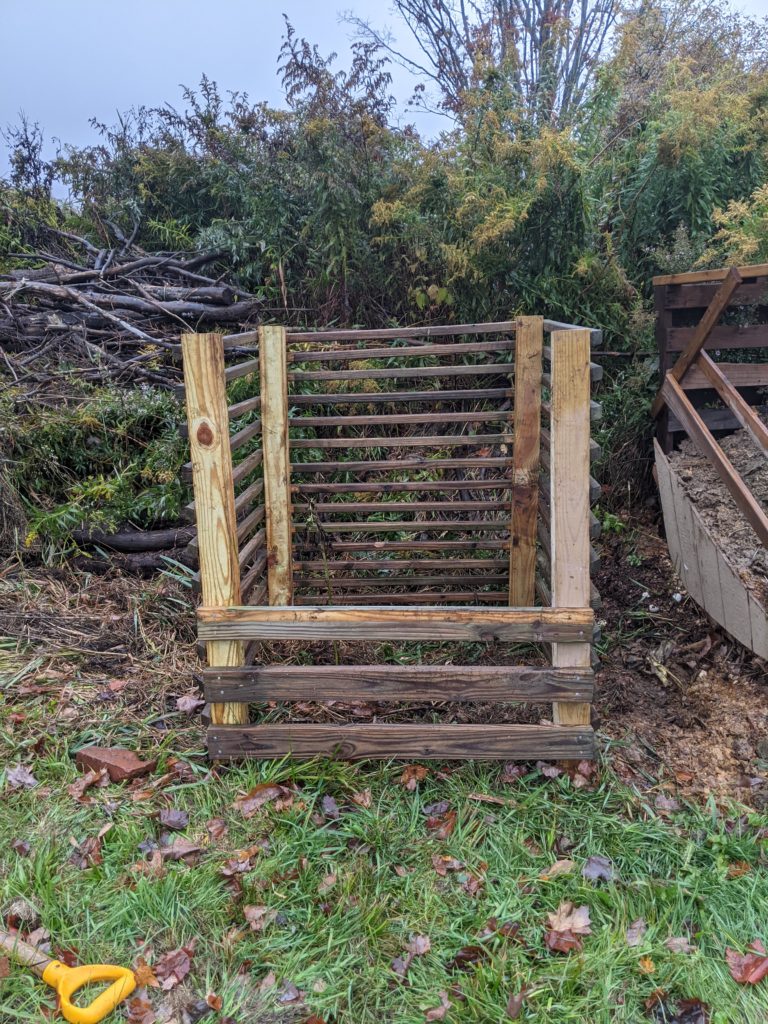As you may have heard, Snowy Brook Farm has a lot of chickens. 7 gazillion to be exact. While we do not have the emotional capacity to develop a personal connection with every single chicken, it is true that at least some of our chickens have names. In fact, I’ve added a tab to the main page with photos of all of our named chickens! But how does a chicken become a “named” chicken? And how is that name decided on? Let’s explore the taxonomy of Snowy Brook chickens
At the dawn of the Snowy era in the year 0 BSB, all chickens were nameless. However, one day my brother and his wife sent us Home Depot gift card sleeves, in the form of miniature aprons.
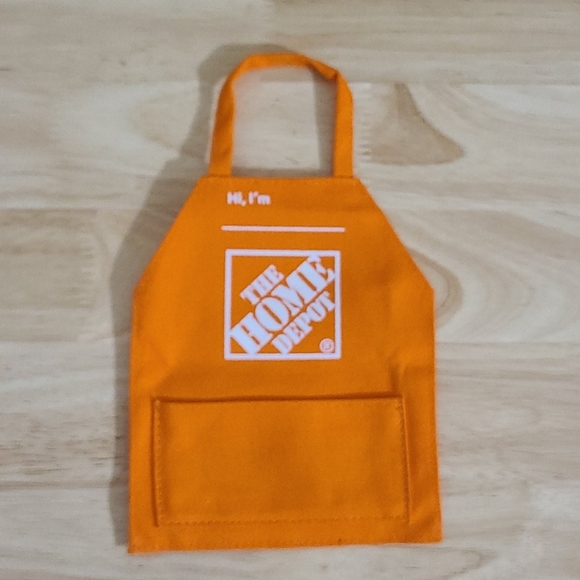
These tiny aprons are supposed to be a cute gag referencing the outfits worn by the employees at Home Depot, but as it so happens, they also fit well on chickens. However, at the top, it says “Hi, I’m _______”. In order to wear the apron, you must have a name. It is the Law of the Apron. As such, to put these aprons on our chickens we started naming them. And thus, Clyde was born 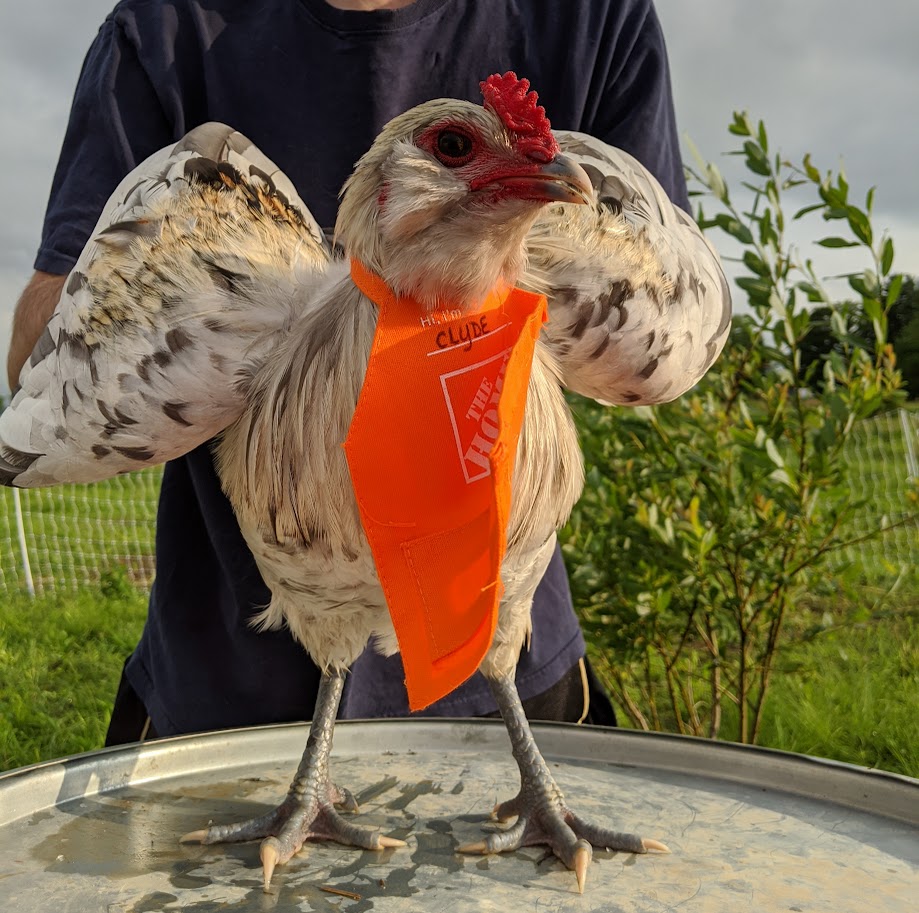
Why Clyde? I don’t know. The boss named him, and whenever I ask the boss why he’s named Clyde, she just gives a ¯\_(ツ)_/¯ and we carry on with our day. Understandably, I have mostly taken on chicken naming duties since, though Amy still participates when appropriate.
To earn a name, there must be something that sets a chicken apart from the flock. Once that happens, the name just naturally develops. For example, a chicken that poops a lot might just naturally start being called “Sir Poops a Lot”. And if it sticks, it becomes their name for life, and that chicken officially becomes a Named Chicken. Being a Named Chicken is a very prestigious status, often resulting in extra corn (they like this), and extra human attention (they do not like this). Additionally, a Named Chicken gains a form of immortality, for when they inevitably pass on to the great Yolk in the sky, a new chicken will one day come along with their same traits and personality, and they inherit the name and are treated as one-in-the-same with the original.
Deep stuff, huh… A chicken name is a name that will be carried on the farm for life. Thus, it is of the upmost important that our names carry with them a level of thoughtfulness that is reflective of this farm’s high standards. And so to understand this process fully, below I will go over each of the current Named Chickens of the farm and why they are the name they are.

Name: Little Red Hen
Origin of Name: She’s a little red hen
Why she’s Nameworthy: Hops to patio door and jumps at sliding door to come in house and eat chip crumbs on the floor

Name: Jayne and/or April
Origin of Name: Michigan same-sex couple that helped legalize gay marriage
Why they’re nameworthy: Jayne and April were two Buff Orpingtons hens that were always grouped up. There was clearly some sort of AI manufacturing error, because both of their motions were completely identical all the time. One day, one of them was eaten. We have no idea which. So the remaining one is Jayne and/or April.
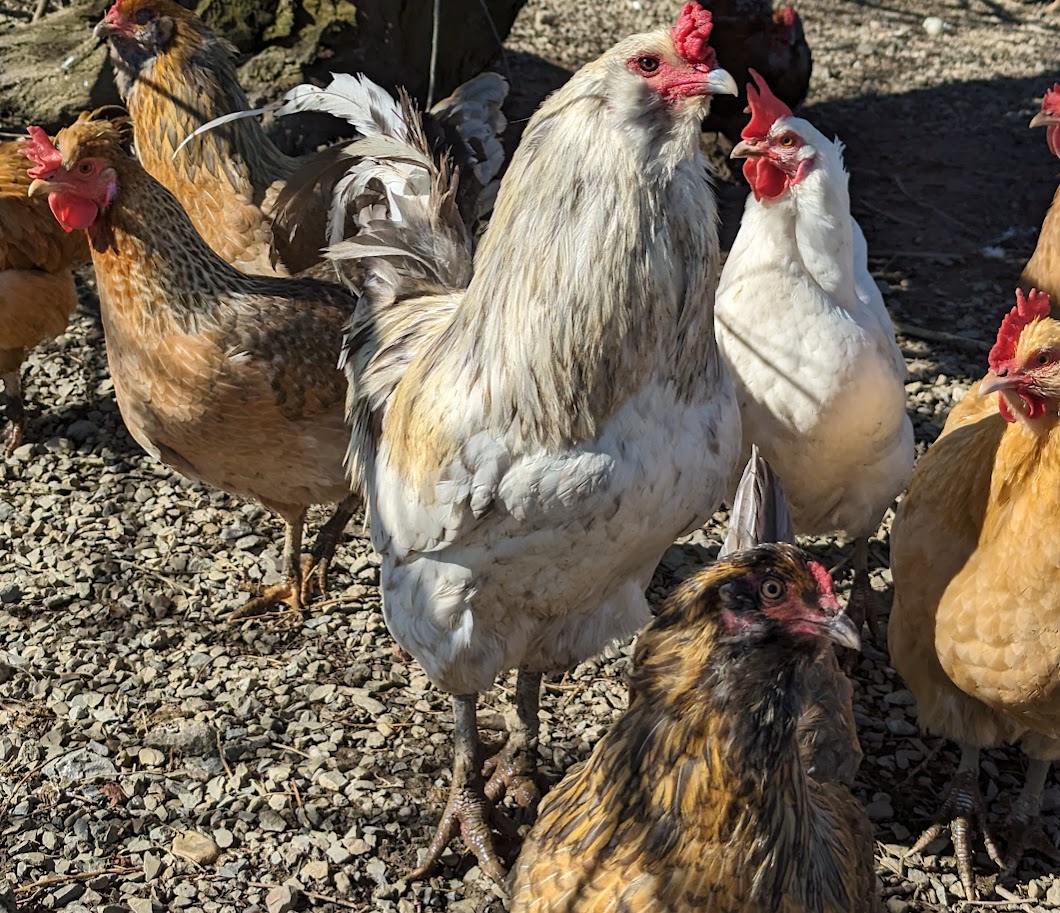
Name: Clyde
Origin of Name: ¯\_(ツ)_/¯
Why they’re nameworthy: You know that award that sometimes gets given out to the first person to do something, even if they didn’t necessarily do it well? Clyde was the first rooster. So he got a name just for existing. Fortunately, he did a good job living up to being a Named Chicken, and is probably the most regal rooster we have on the property.
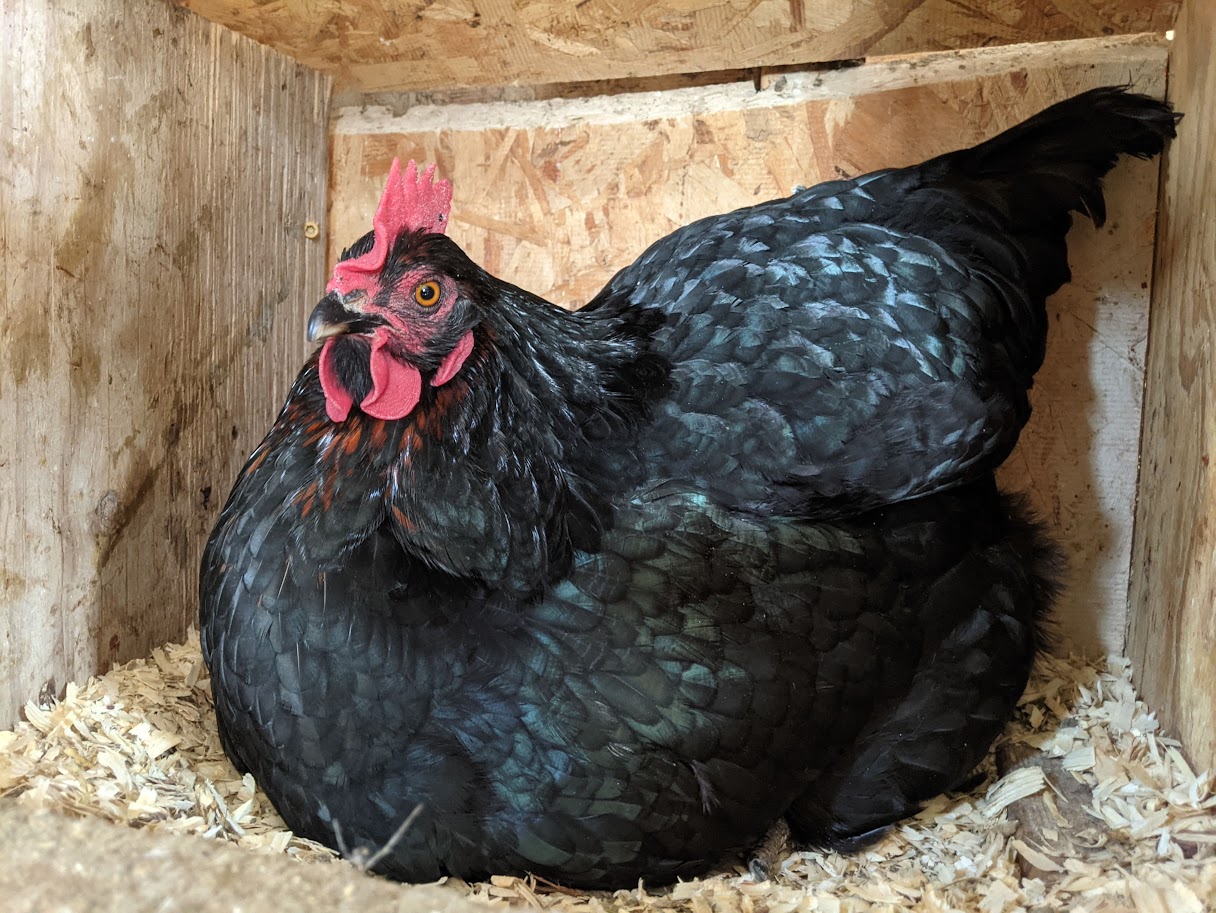
Name: Stormy
Origin of Name: Dark thunderclouds. Sex worker who had an affair with a former president and got shortchanged on the bill.
Why they’re Nameworthy: This is another “early chicken gets name by default” accolade. Dark = Stormy. But unlike Clyde, she’s done very little to be a Nameworthy chicken, with no notable attributes other than being dark. An early blunder on our part.
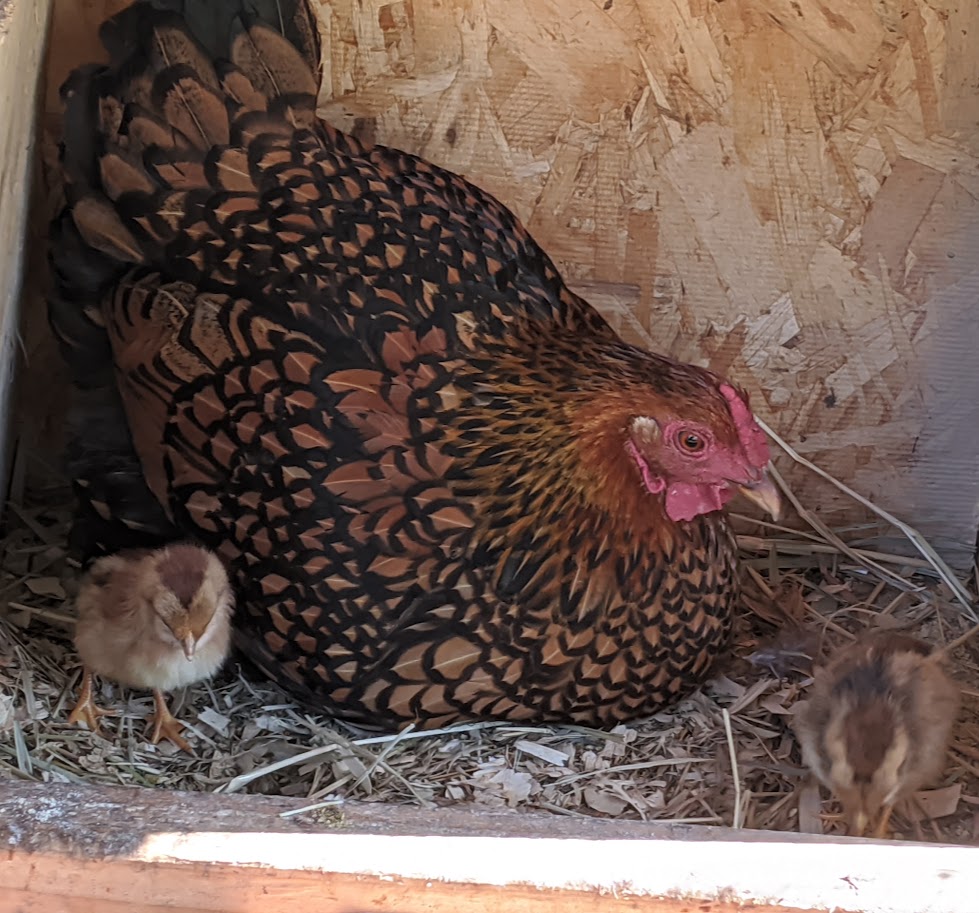
Name: Big Mama
Origin of Name: Absolutely stupid Metal Gear Solid reference
Why they’re Nameworthy: Big Mama is the best mama chicken. When she was broody, she would not give in to the egg collection, and her willpower was strong enough that we just sighed and let her go through with the whole motherhood thing. And she did a damn good job at it. No two chicks were safer than hers, much to the chagrin of neighboring hens that got too close.
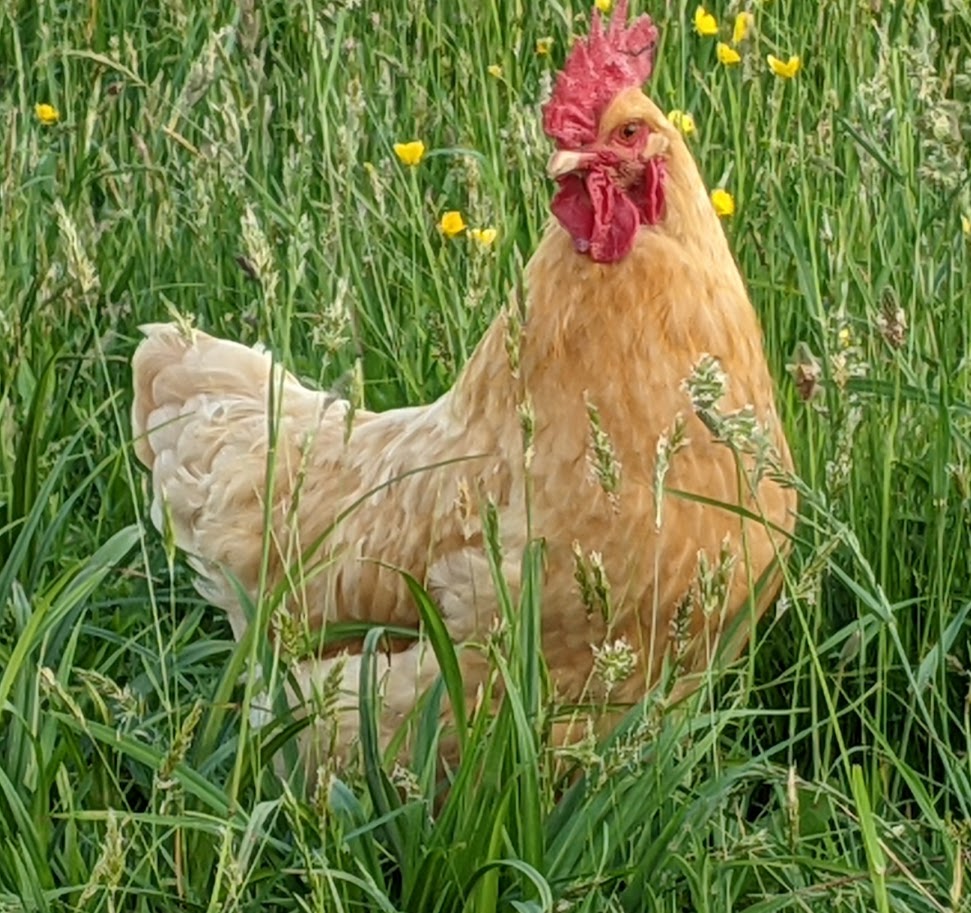
Name: Hermes:
Origin of Name: Hermaphradite
Why they’re Nameworthy: Hermes was a hen… until she wasn’t. Apparently that happens in the chicken world. I think Aphrodite made more sense if we were going with Greek mythology here, but I was overruled by the boss.
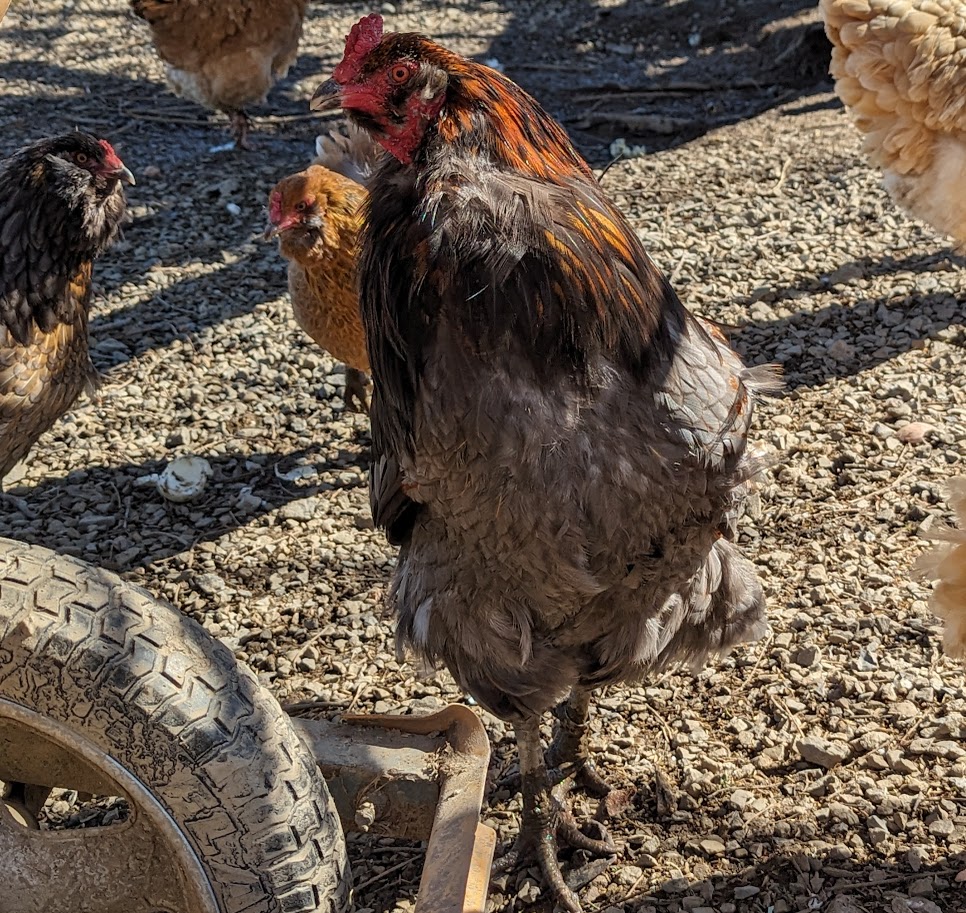
Name: Shy Guy
Origin of Name: Common Mario nemesis
Why they’re Nameworthy: Back in the day, we had an emergency pen in the garage for chickens that couldn’t seem to… well.. survive well with the rest of the flock due to some defect. Shy Guy’s defect was that he was just too shy. He sat in a corner getting beat on by the other roosters, doing nothing to defend himself or make allies. He has since learned how to chicken better and has grown into a finely feathered rooster with plenty of friends.
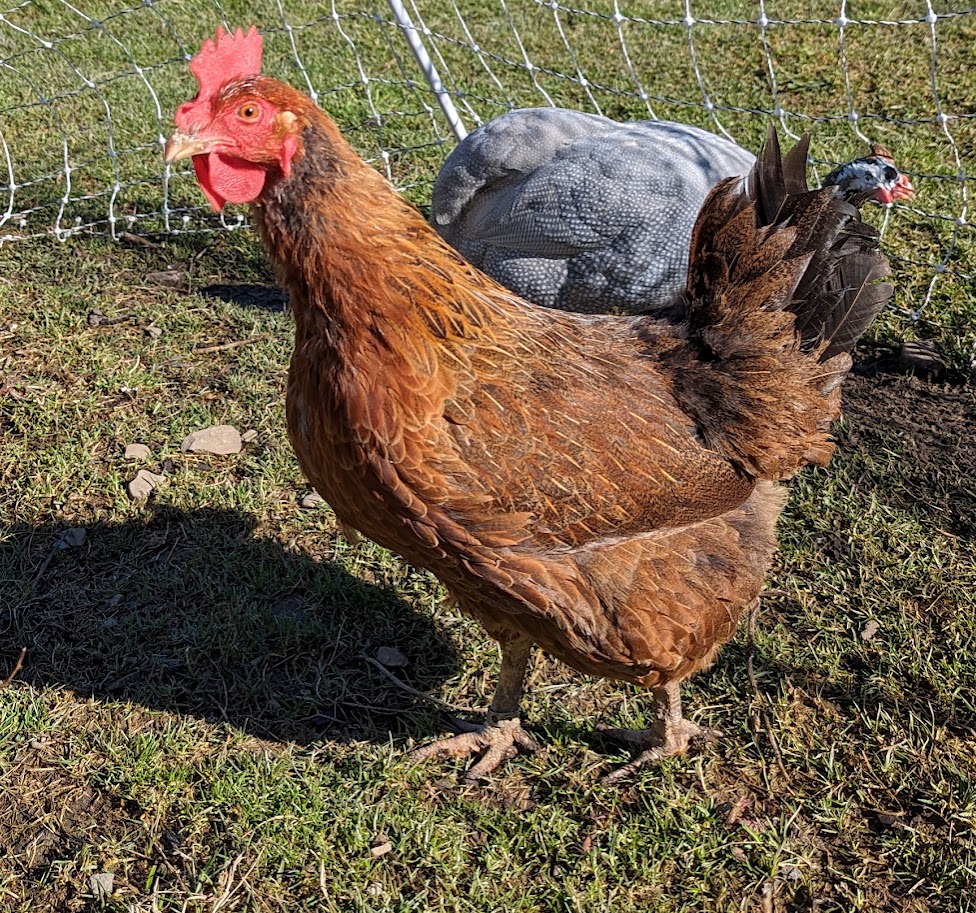
Name: Boss
Origin of Name: That person that gets paid more than you to tell you what to do
Why they’re Nameworthy: Boss goes where she pleases. Often that involves following a human, because following a human often leads to food one way or another. This is especially true if your task involves a shovel. Shovels mean worms, and you can bet Boss will be the first one at the excavation site.
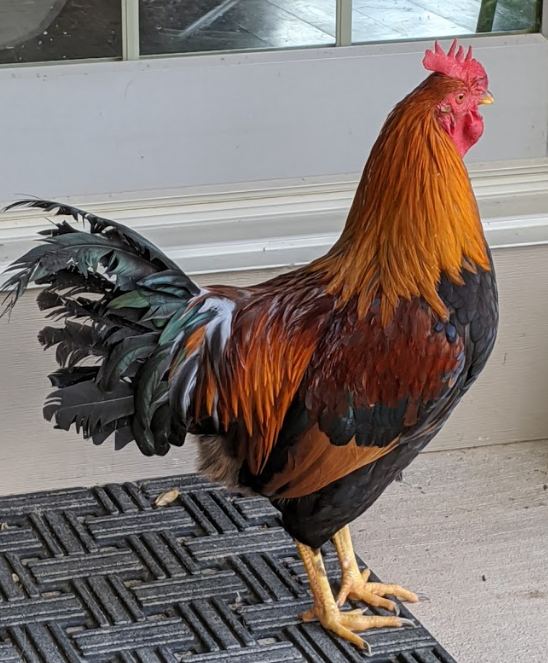
Name: Heihei Chickenchicken
Origin of Name: Chicken from Moana that looks like this thing
Why they’re Nameworthy: Heihei is the Yang to Clyde’s Yin. The two have lived in balance ever since being the first two roosters as Snowy Brook. And like any Yin/Yang relation, they are complete opposites. While Clyde is the stoic, regal chicken with all the ladies, Heihei is a coward. There isn’t a moment where he’s not screaming to let all the chickens know that danger is present. This danger takes many forms, including crows, rocks that tip over in the wind, dandelion growth, cold stares, 3 leaf clovers, sunshine breaking through a cloudy day, other chickens, fungus…

Name: Larry
Origin of Name: Larry David, co-creator of Seinfeld and Curb.
Why they’re Nameworthy: Larry was our first naked-neck chicken. They say not to judge a book by its cover. You can do that here. Larry is as awkward as he looks, and rarely follows the societal norms set forth by chicken society. Despite this, he’s somehow the most prolific chicken on our farm. I hope people want naked-neck chickens.
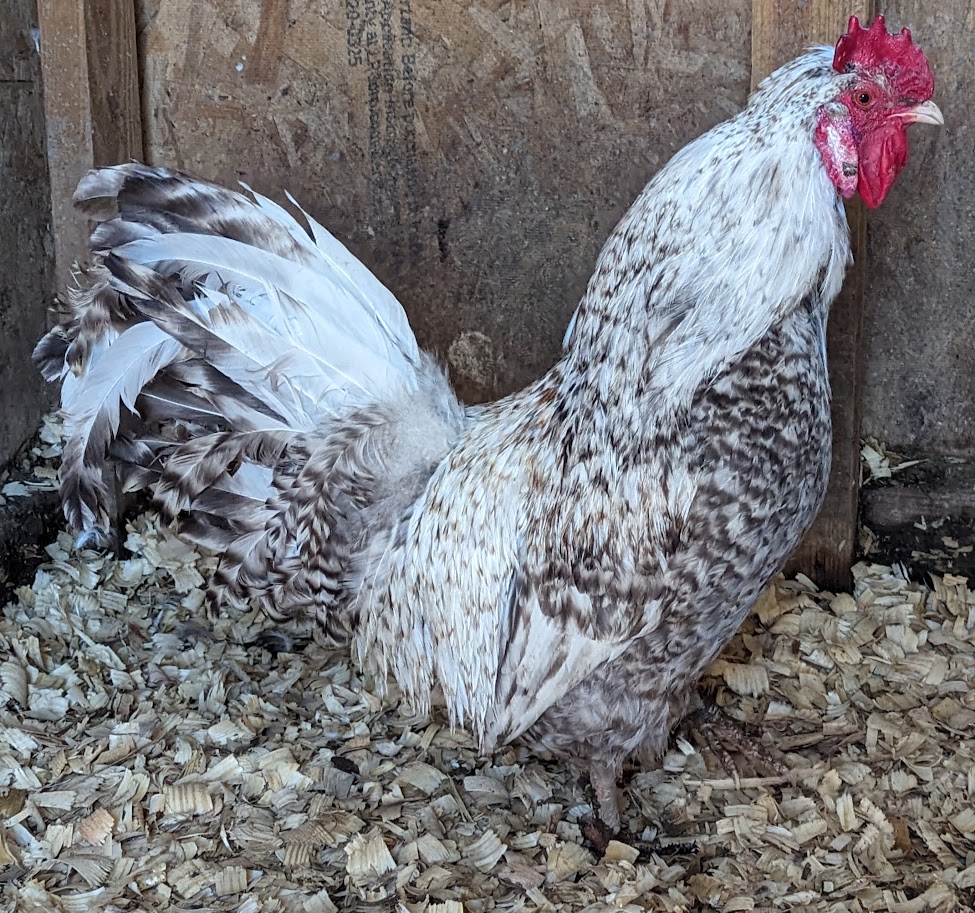
Name: Friendly Rooster
Origin of Name: It’s a friendly rooster
Why they’re Nameworthy: In a world where no other roosters want to put up with Larry’s schenanigans, Friendly Rooster came in to fill the void. He often tagged behind Larry on all his adventures towards social acceptance, providing clucks of encouragement after each of his failed courtship attempts. Eventually, without any sort of prompting, he started coming up to me for corn, making him Friendly Rooster.

Name: Danny Bhanton
Origin of Name: Danny Phanton, Nickelodeon TV show in the early 2000s.
Why they’re Nameworthy: She’s a Bhantom. Danny Bhantom! I’m not going to turn down an easy pun when it’s gifted to me like that.
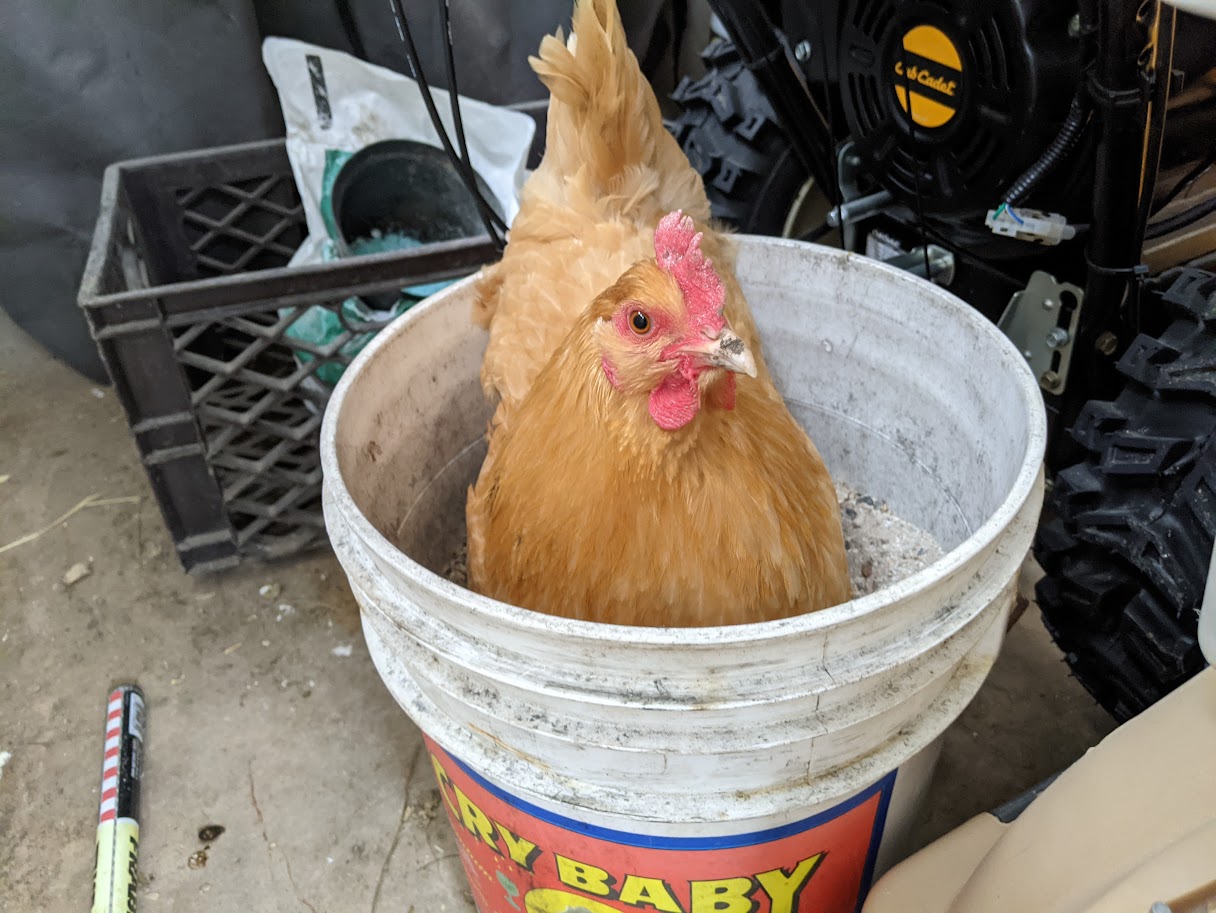
Name: Bucket Buff
Origin of Name: Bucket + Buff Worpington chicken = Bucket Buff
Why they’re Nameworthy: In the early days, chickens used to have access to the garage where a nest box had naturally formed in the corner of the structure. This buff did not like the nest box in the corner. It preferred buckets.

Name: George
Origin of Name: Quote from Amy, “I just made it up”
Why they’re Nameworthy: George is Polish. In the chicken world, that just means he needs a haircut. His long, stupid hair made him a target for other chickens to pick on, and he eventually found himself in the emergency pen with Shy Guy and CeCe. The three of them formed a close bond and together using the power of friendship, became three Named chickens
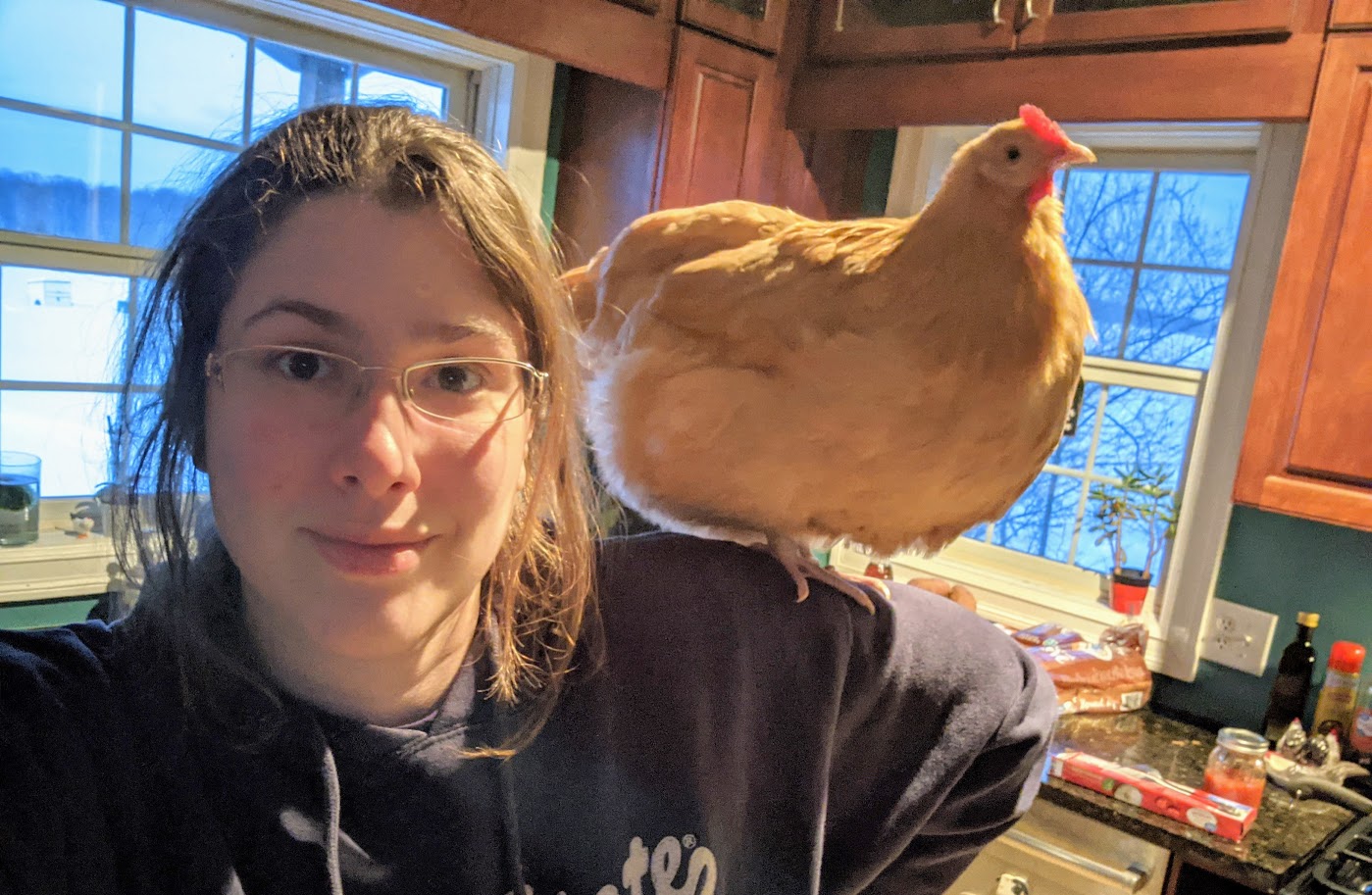
Name: CeCe
Origin of Name: Short for Crazy eyes Crazy eyes
Why they’re Nameworthy: CeCe was the runt of the litter, and lacked development in many areas, including the brain. Now chickens don’t have much to work with there to begin with, so CeCe spent her days in the emergency pen mostly trying to figure out how to function. But because her brain was already so tiny, that meant she had an even tinier head. This led to an interesting phenomenon where her eyeballs were larger than her head and she always looked like she was bugging out. Thus… crazy eyes! She eventually did figure out how to function to some extent, but her eyes were crazy till the end.

Name: Goose
Origin of Name: Goose
Why they’re Nameworthy: It’s a goose, what’s our other option? Not name the goose?
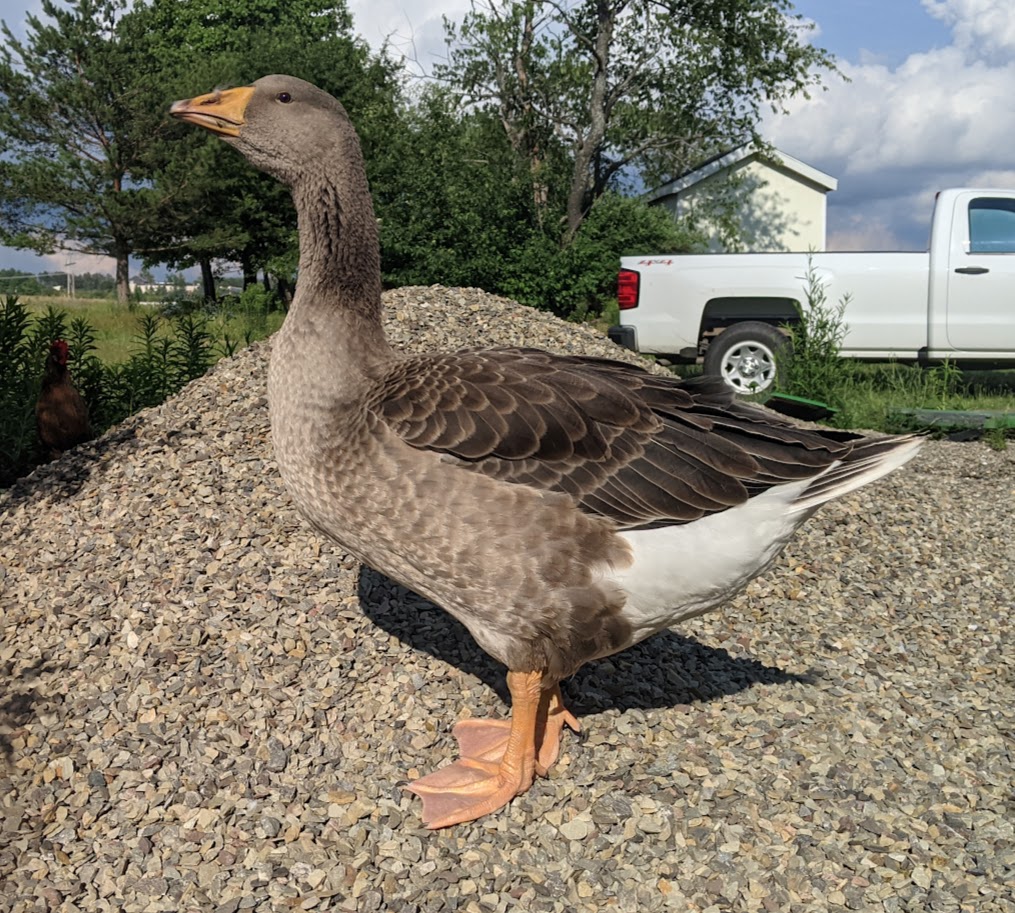
Name: Lady Goose
Origin of Name: Goose with lady parts
Why they’re Nameworthy: It’s Lady Goose.
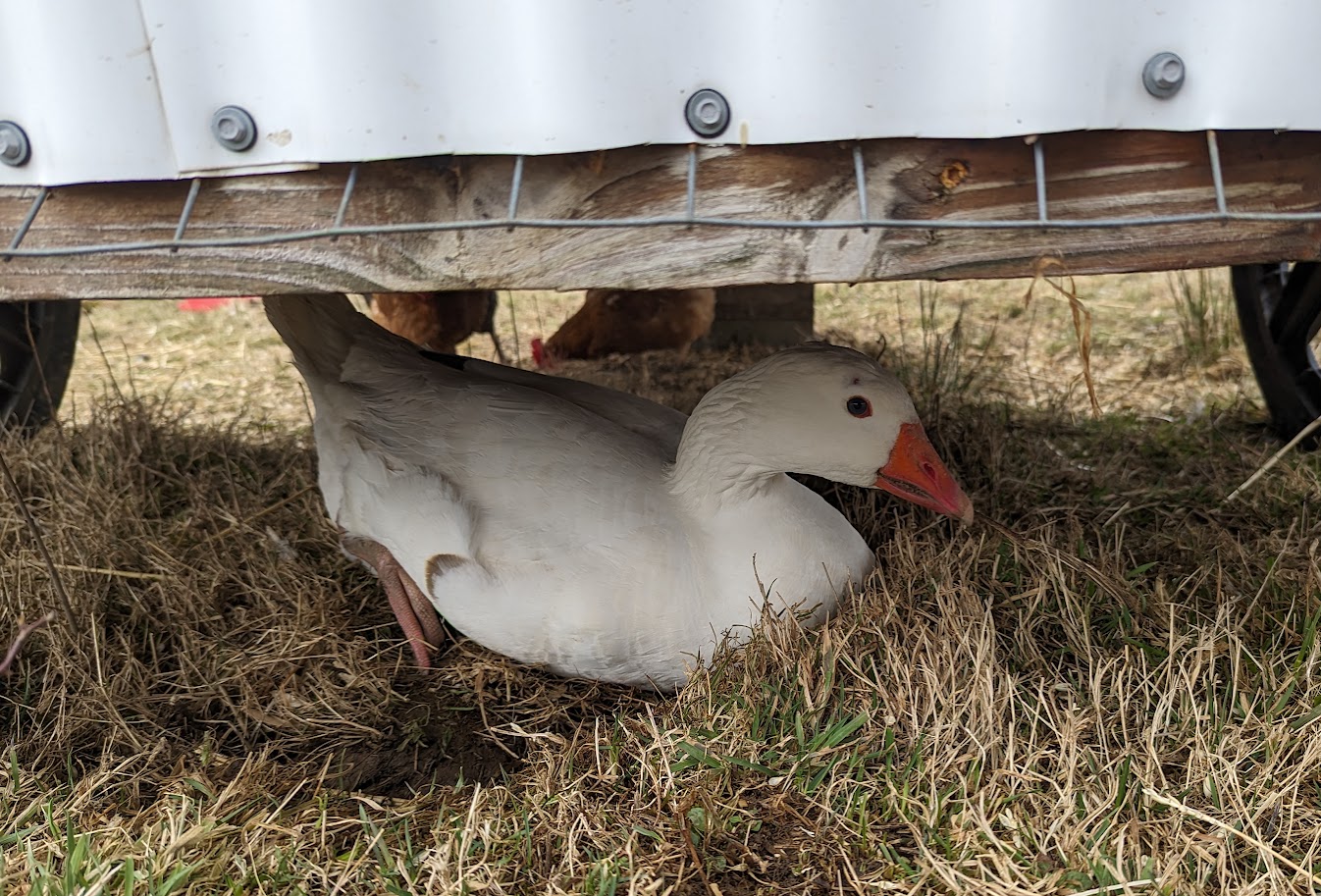
Name: Gregorina the Gimpy Goose
Origin of Name: It was Greg, but then she got broody one day and an emergency naming session was required.
Why they’re Nameworthy: It’s a gimpy goose. Also alliteration.
